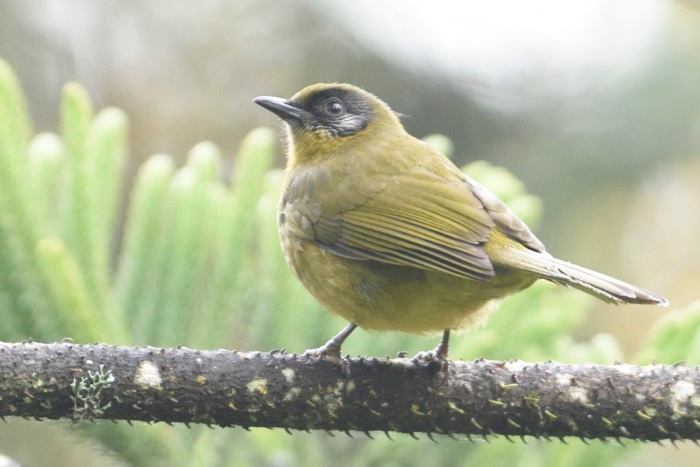Tanzania, July 2 - 17, 2015

Tanzania, July 2 - 17, 2015

Wednesday 29 July 2015

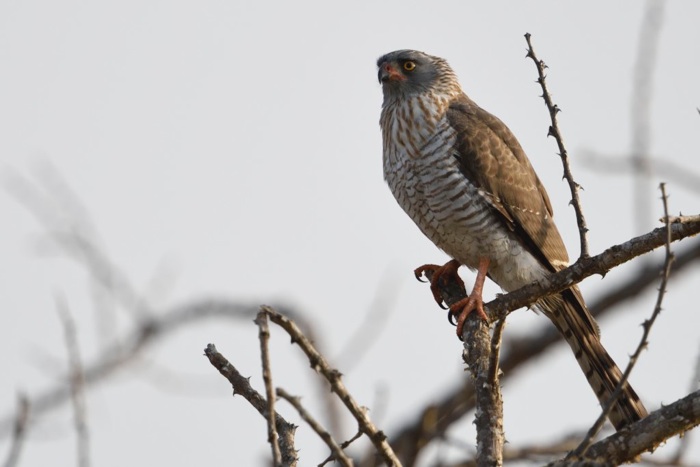
Gabar Goshawk, Juvenile, Micronisus gabar
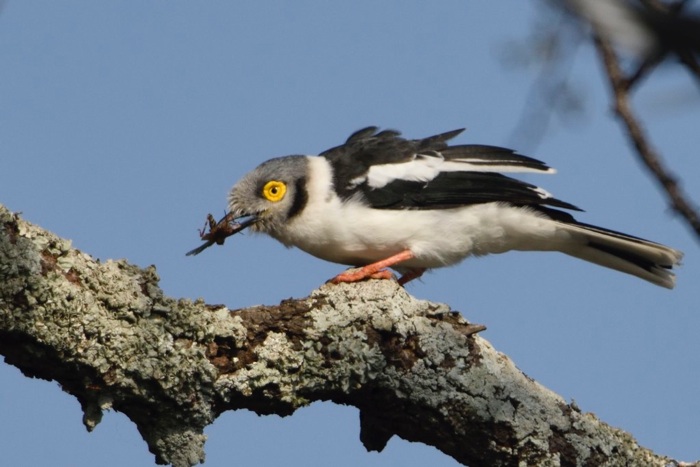
White-crested Helmet-Shrike, Prionops plumatus
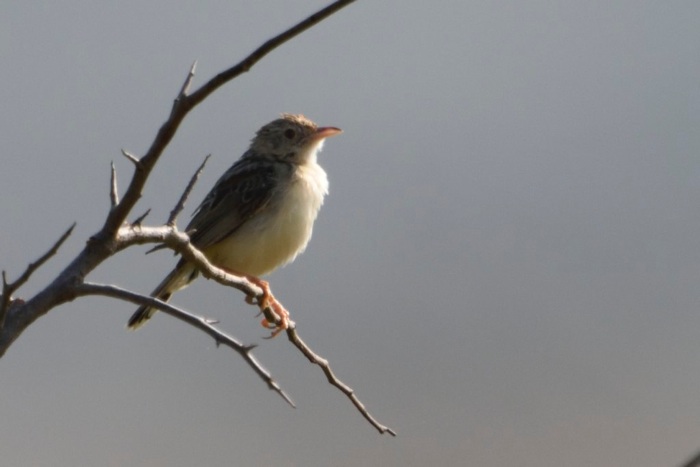
Ashy Cisticola, Cisticola cinereolus - Endemic to NE Africa - Picture Lifer
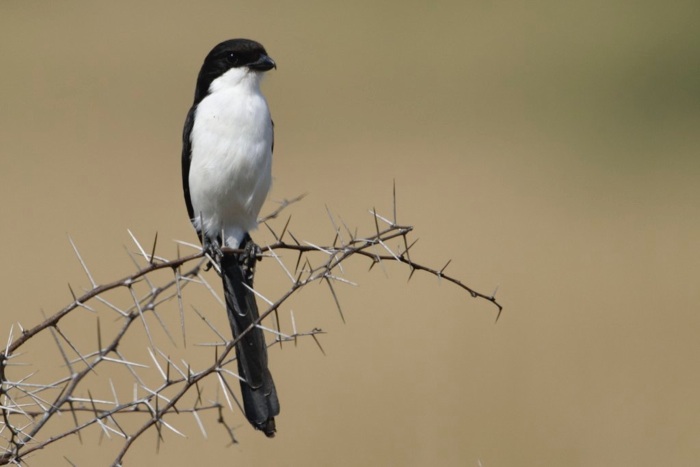
Long-tailed Fiscal, Lanius cabanisi- Endemic to NE Africa
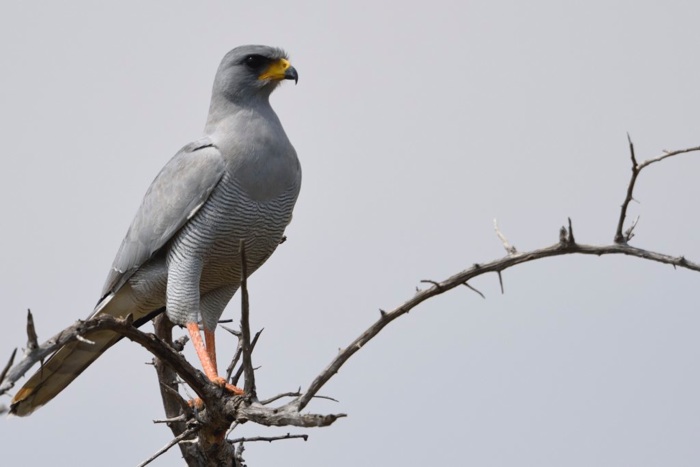
Eastern Chanting Goshawk, Melierax poliopterus - Endemic to NE Africa
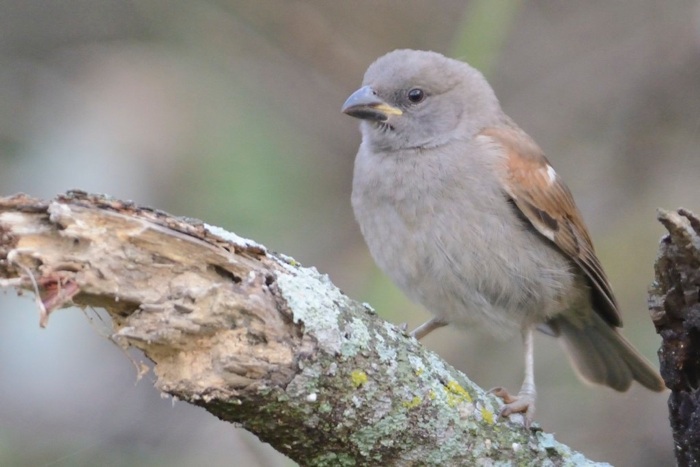
Parrot-billed Sparrow, Juvenile, Passer gongonensis - Endemic to NE Africa
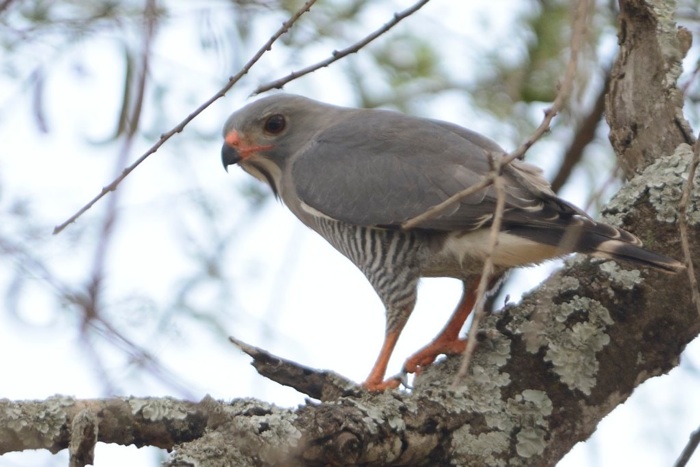
Lizard Buzzard, Kaupifalco monogrammicus
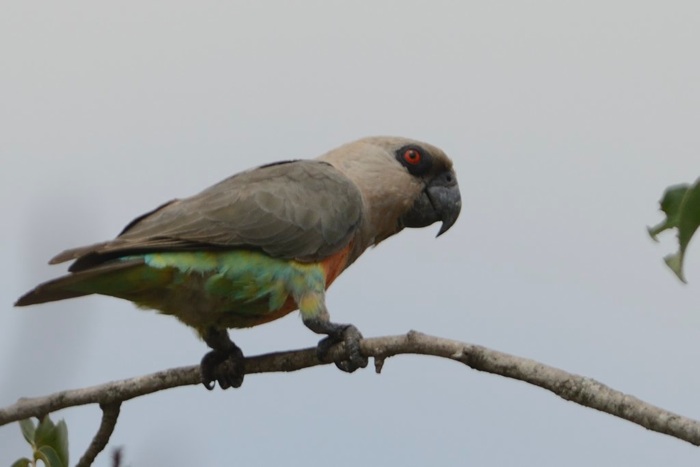
African Orange-bellied Parrot, Poicephalus rufiventris - Endemic to NE Africa
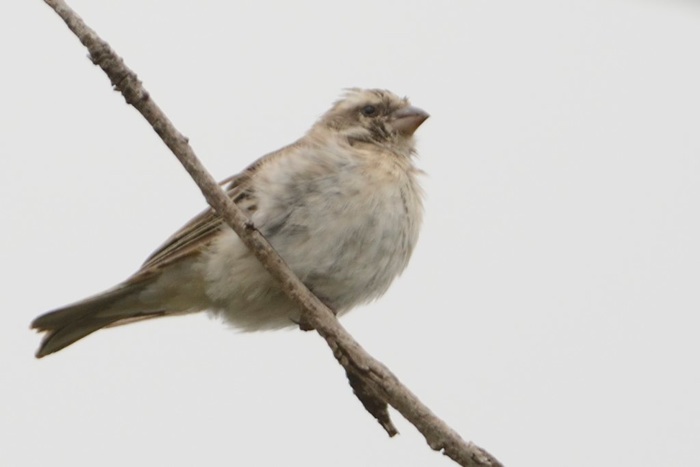
Reichenow´s Seed-eater, Crithagra reichenowi - Endemic to NE Africa - Lifer
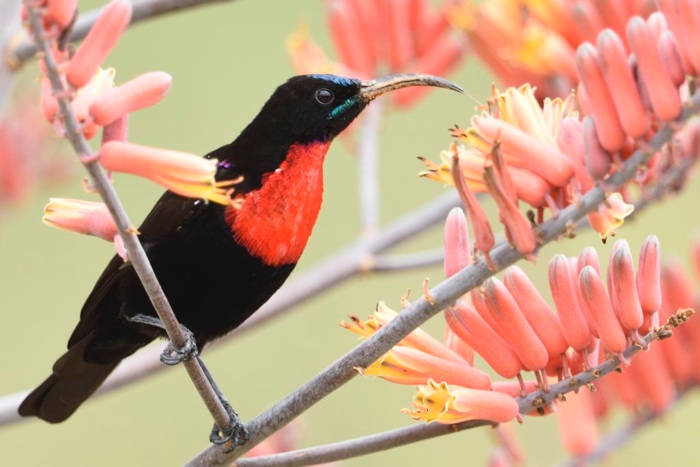
Hunter´s Sunbird, Chalcomitra hunteri - Endemic to NE Africa - Lifer
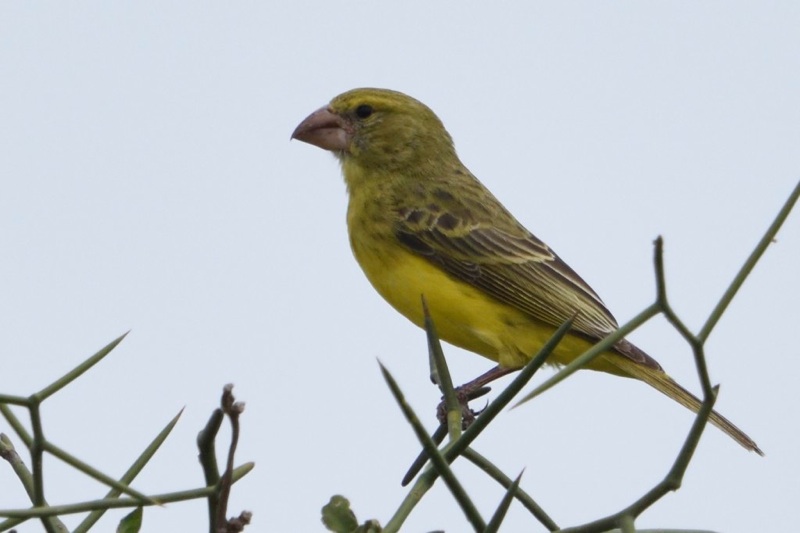
Southern Grosbeak-Canary, Crithagra buchanani- Endemic to S Kenya and N Tanzania - Lifer
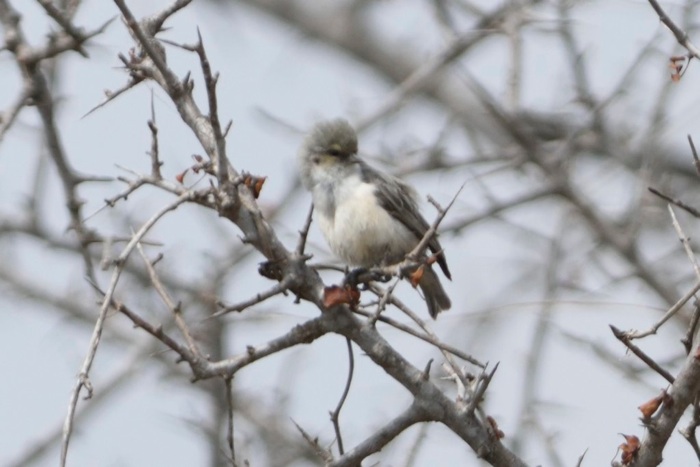
Mouse-coloured Pentuline-Tit, Anthoscopus musculus- Endemic to NE Africa - Lifer
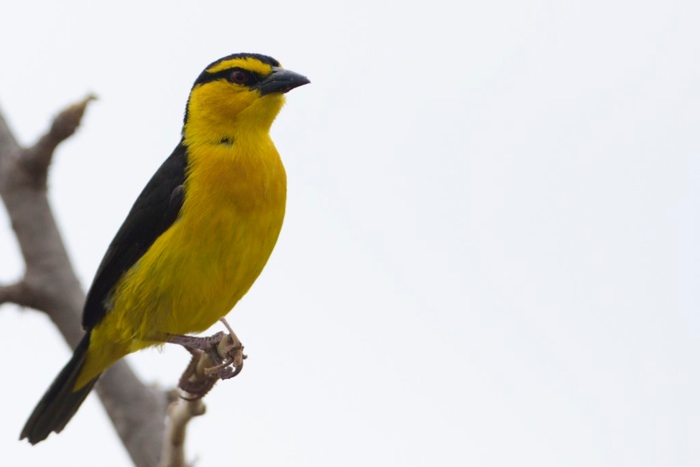
Black-necked Weaver, Ploceus nigricollis
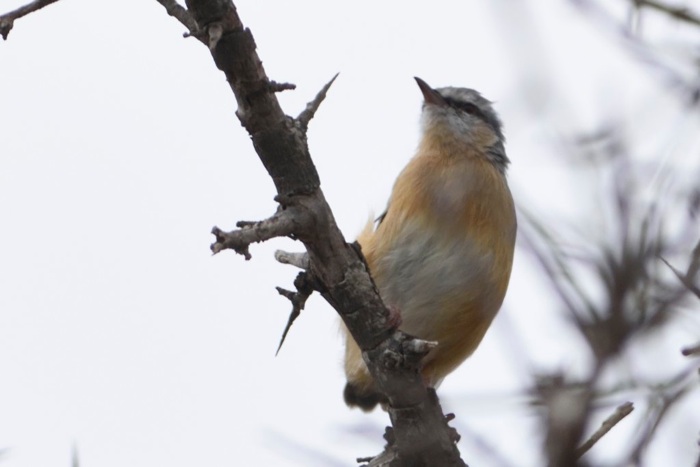
Northern Crombec, Sylvietta brachyura - Lifer
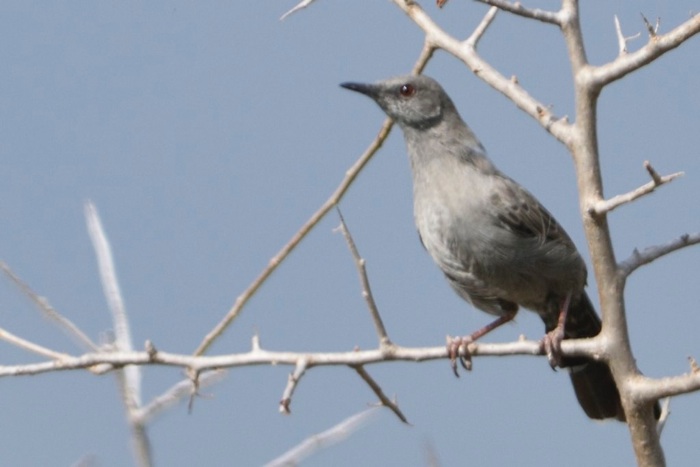
Grey Wren-Warbler, Calamonastes simplex - Endemic to NE Africa
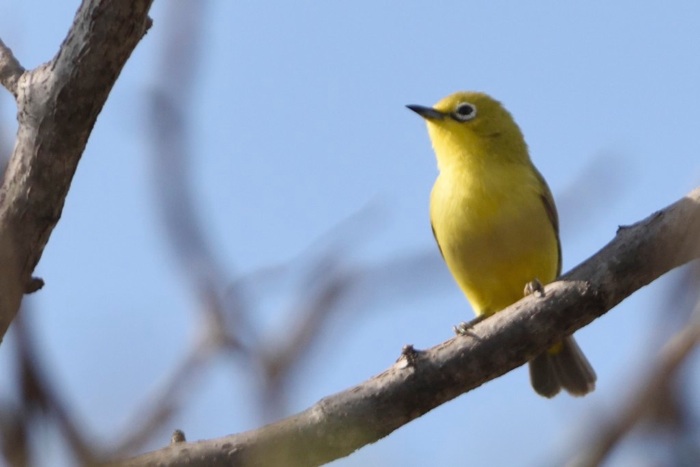
Abyssinian White-eye, Zosterops abyssinicus - Endemic to NE Africa - Lifer
Day 2, July 5, 2015: South Pare Mountains - Mkomazi NP Gate
We had an early start again. Today we were heading for South Pare Mountains. The main target bird here was the South Pare White-eye endemic to this mountain range. However; there were many other target birds that overlapped with West Usambaras. I told Martin that the more we got here, the less we needed to look for at the West Usambaras. Martin knew about a forest patch at the top of the mountains and once there we parked the car. Martin at once picked up the diagnostic call of an Evergreen Forest Warbler (Lifer - no Photo). We got a few glimpses of the bird but not enough to get a picture. In the first patch of trees, we picked up Yellow-bellied Waxbill, Red-throated Twinspot and a Black-headed Mountain Greenbul. We walked a little down the road and we heard the Evergreen Forest Warbler calling everywhere. At one point it was calling from some bushes just a meter in front of us, but it did not want to come out. We saw it cross the road like a little mouse a few times, but this turned out to be my bogey bird for photography for the entire trip. We heard it every day in the West Usambara too, but never even got a glimpse of it after the day in South Pare. Moving on, we located a Stripe-faced Greenbul (Lifer), then a Usambara Double-collared Sunbird (Lifer). We heard the African Hill Babbler many times, but it did not want to come out. The next bird we connected with was a Bar-throated Apalis. We had still not even heard the White-eye. We returned to the car for breakfast. After breakfast we walked the same route again and Martin finally picked up the sound of the White-eye´s. They were high up in the foliage of a tree and we only managed to get some record shots when they flew to some dead branches. With South Pare White-eye (Lifer) in the bag, we could lower our shoulders. Florence wanted a better picture, so we spent some more time relocating them. The next bird was a Placid Greenbul (Lifer). This is truly a skulker and we only managed to get a record shot of this bird. We encountered this bird many times, but it never wanted to pose for us. We reconnected with the White-eyes a few more times, but we did not manage to improve on our first pictures. Florence actually managed to photograph an Abyssinian White-eye from a mixed flock.
Martin knew a small forest patch at the foothills of the South Pare Mountains and we drove down there. On the way down, we found a Striped Pipit (new TZ bird for me). In the forest patch, we quickly connected with the Abyssinian White-eye plus a nicely perched Somali Bunting. Then we walked for a long time before we had a confiding Red-fronted Tinkerbird. We had quite a walk back to the car and it was getting serious hot. I walked ahead of Martin and Florence. I thought I should turn on the AC for them, but once at the car I ran in to a bird party. I traced a Red-faced Crombec for a while without getting a decent shot, then a Orange-breasted Bush-Shrike with the same result (Florence nailed both of them + a Cardinal Woodpecker). We returned to the Lodge for lunch and an ice cold beer. Later that afternoon, we returned to the gate of Mkumazi NP. This little patch proved very productive. The first bird to greet us was the Hunter`s Sunbird, followed by Nubian Woodpecker, Eastern Black-headed Batis (male and female), Orange-breasted Bush-Shrike, D`Arnaud´s Barbet a overflying Lizard Buzzard, Spot-flanked Barbet and on the way out a male Tsavo Sunbird.
I wanted to try for Owls and Nightjars in the dark, but it turned that the road was way to busy. I still do not have any Nightjars on my TZ list. We still had a good day with 5 lifers for me.
Here are some pictures from day 2:
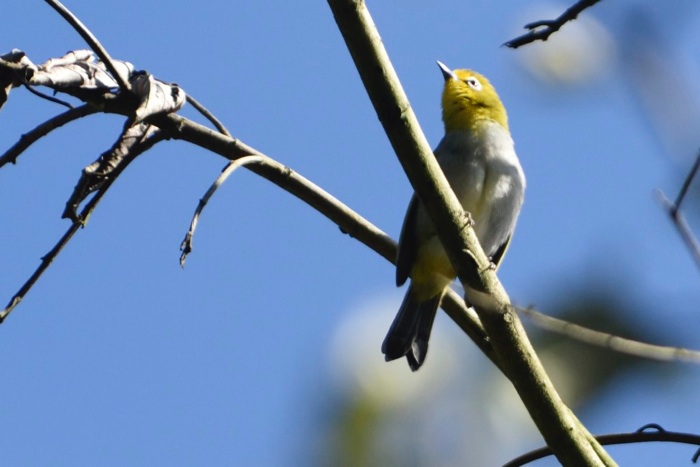
South Pare White-eye, Zosterops winifredae - Endemic to South Pare Mountains, Tanzania - Lifer
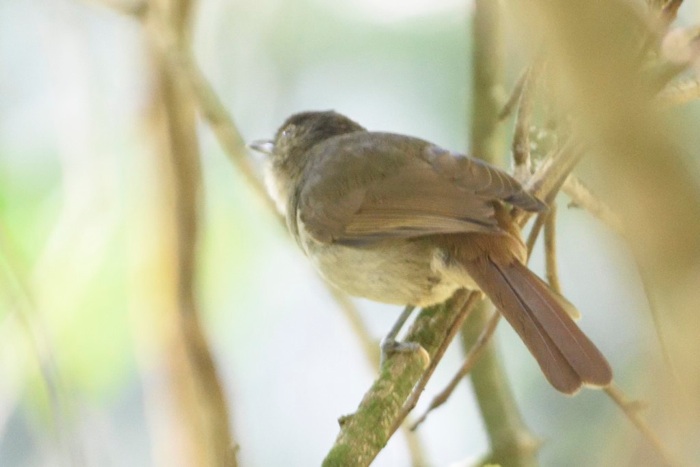
Placid Greenbul, Phyllastrephus placidus - Endemic to SE Africa - Lifer
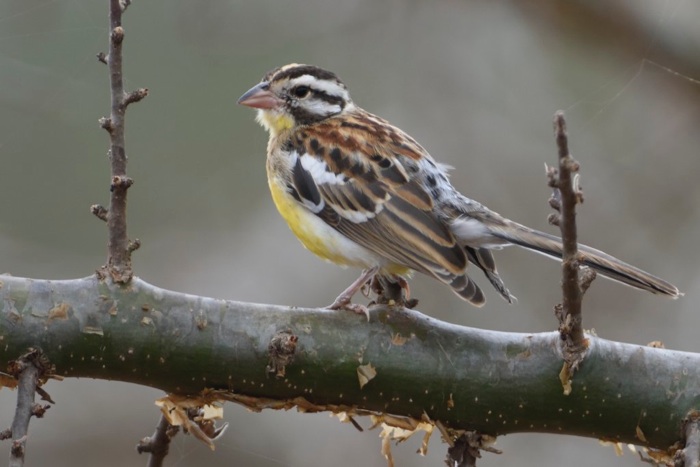
Somali Bunting, Emberiza polioleura - Endemic to NE Africa - Lifer
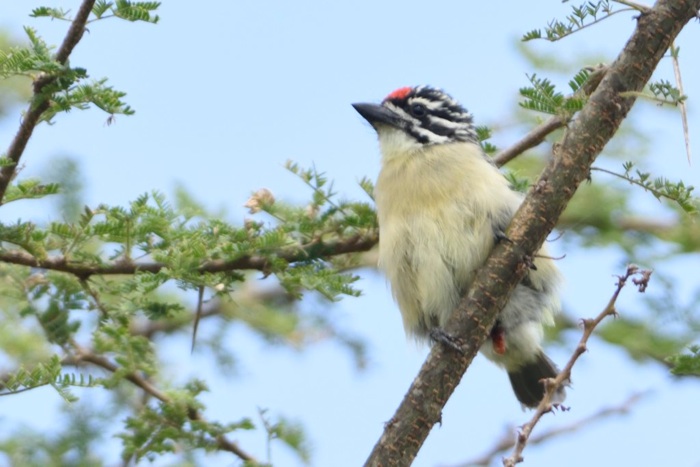
Red-fronted Tinkerbird, Pogoniulus pusillus
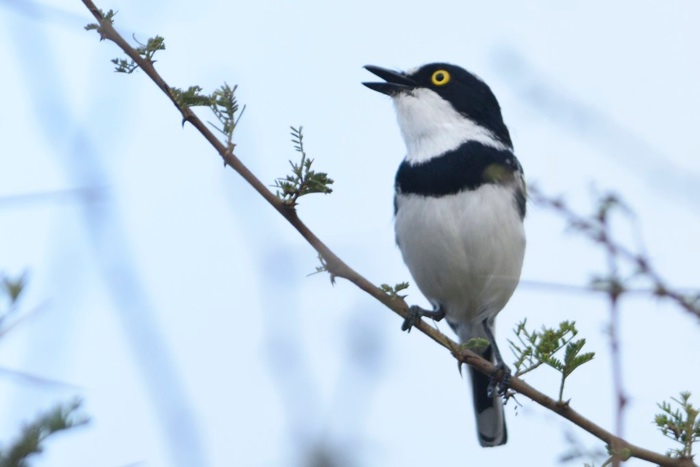
Eastern Black-headed Batis, Batis minor - Endemic to NE Africa
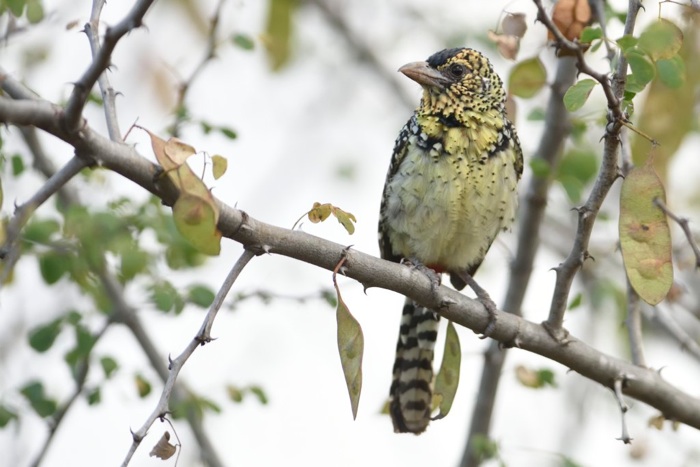
D´Arnaud`s Barbet, Trachyphonus darnaudii - Endemic to NE Africa
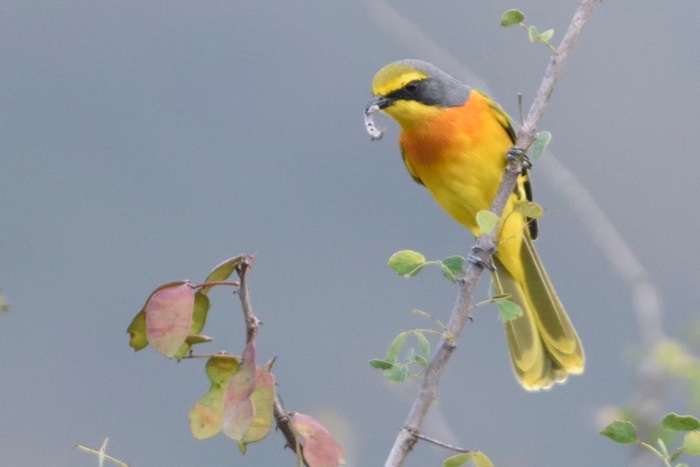
Orange-breasted Bush-Shrike, Chlorophoneus sulfureopectus
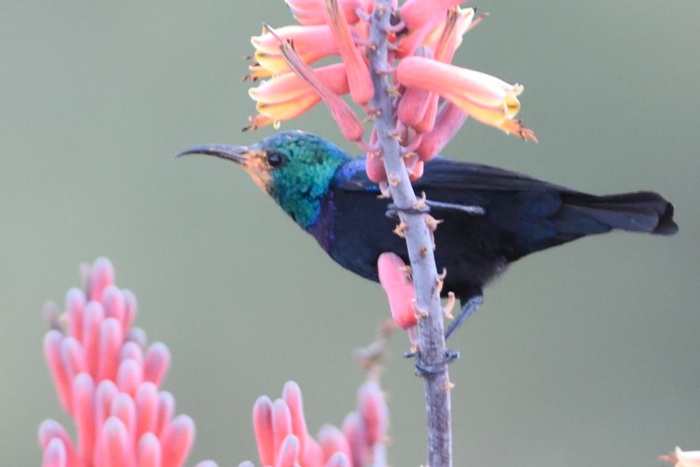
Tsavo Sunbird, Cinnyris tsavoensis - Endemic to E Africa
Day 3, July 6, 2015: Nyumba Ya Mungu Dam - Mkomazi NP Gate
This was our last day in the area and actually our reserve day in case we had missed some of my target birds. We decided to go back to Martin´s secret spot on the way to Nyumba Ya Mungu Dam. Remembering what excellent birding we encountered there during the middle of the day, expectations were very high when we arrived early in the morning. The day started good with a very confiding Pygmy Batis, but then we were struggling until we got a long distance shot of a Northern Brownbul (Photo Lifer). Florence and I found a Scaly Chatterer who we followed in to the bush, but alas never managed to get a decent picture. We found a Black-throated Barbet, but still no good picture of this specie. Then a better picture than before of the Red-fronted Warbler + a Rufous Chatterer. We walked several times from the car down the road that was teeming of life two days before, but the birding were very slow. I connected with some Blue-naped Mousebirds. Martin mentioned that African Skimmers were frequently seen on the dam and since Florence had never seen a Skimmer I told Martin that we should go and look for it. As we drove on to the main road, we picked up a Pink-breasted Lark. a little further towards the dam, Martin spotted a Pringle´s Puffback (Photo Lifer). We got some long distance record shots and tried to follow it in to the bush, but it always kept the distance. Once on the lake, we had plenty of shore birds including Reed Cormorant (huge colony), Grey- and Black-headed Heron, Great White Egret, Water Thick-knee, Three-banded and Kittlitz´s Plover, Spur-winged Lapwing, Malachite and Pied Kingfishers, Grey-headed Gull, Whiskered and Gull-billed Tern, but no Skimmers. Martin bought a couple of ice cold beers for me and we headed back to the first spot to see if the activity had picked up. Florence was tired and decided to stay in the car. Martin and I pushed on, but still very little activity. We picked up the Pink-breasted Lark again followed by White-headed Mousebird, Southern Grosbeak Canary, Red-fronted Warbler and Purple Grenadier. We walked very far and finally I resigned remembering that I still had one beer left in the car. Very strange how the conditions can vary from day to day. This place for sure have potential, but you need to be lucky with the timing. It was still only 1PM so we had plenty left of the day.
We decided to head back to the Gate of the Mkomazi NP. Once there, we reconnected with the Reichenow´s Seed-eaters, then Red-and-yellow and Spot-flanked Barbet. This area were also quiet now, so we decided to give in a little early. The last bird was a Straw-tailed Whydah.
Here are some pictures from day 3:
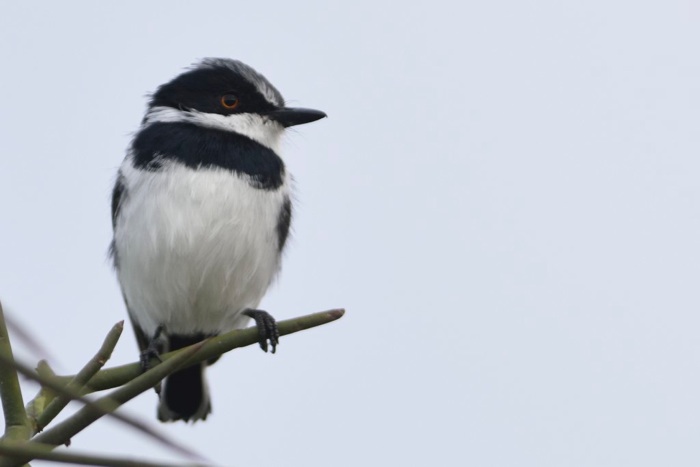
Pygmy Batis, Batis perkeo - Endemic to E Africa
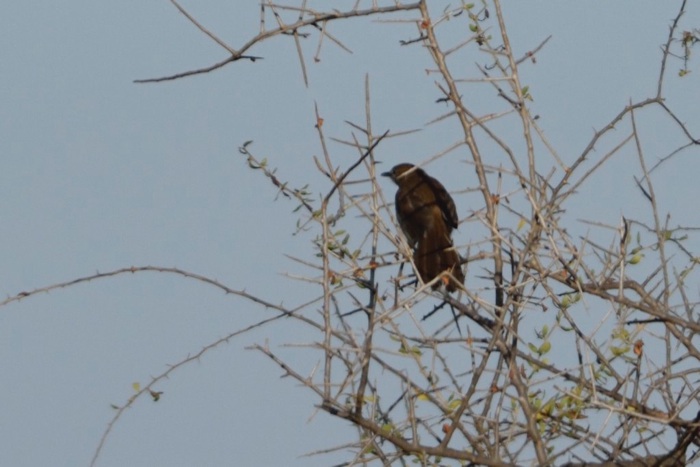
Northern Brownbul, Phyllastrephus strepitans - Endemic to E Africa - Picture Lifer
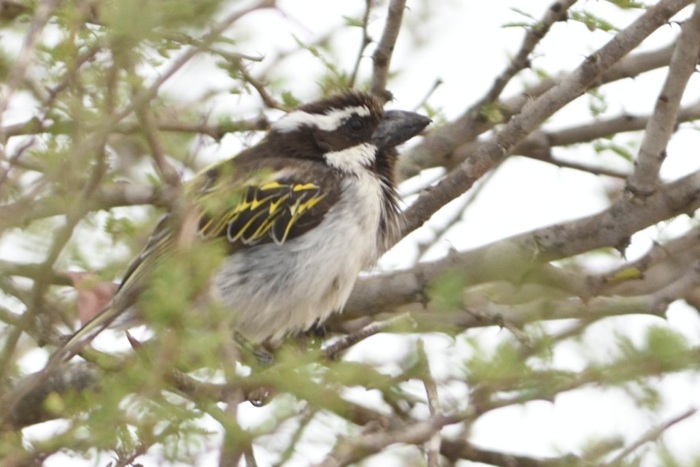
Black-throated Barbet, Thricolaema melanocephala - Endemic to E Africa
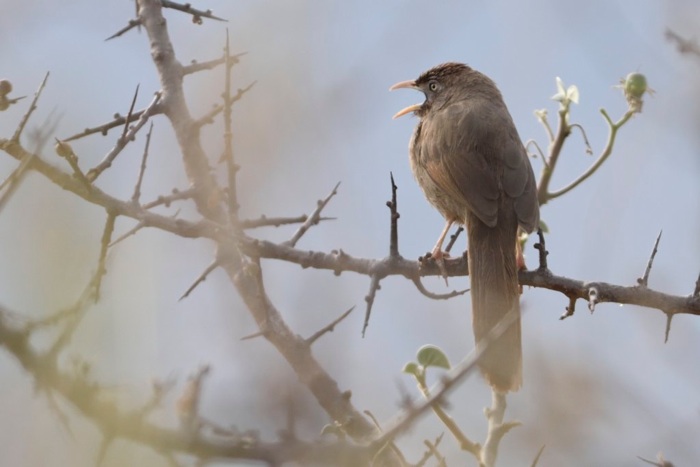
Rufous Chatterer, Turdoides rubignosa - Endemic to E Africa
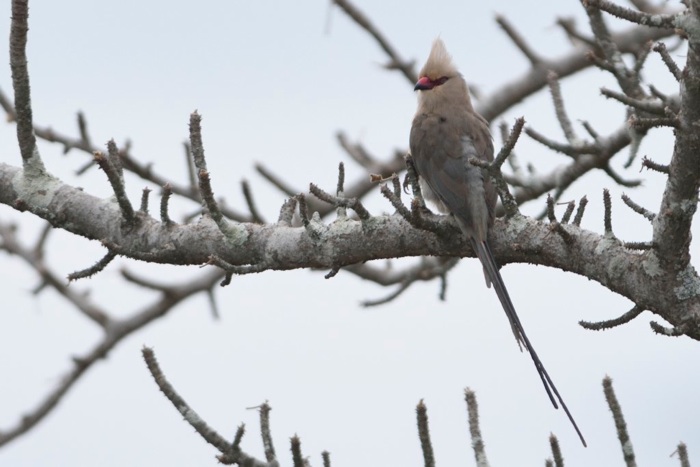
Blue-naped Mousebird, Urocolius macrourus
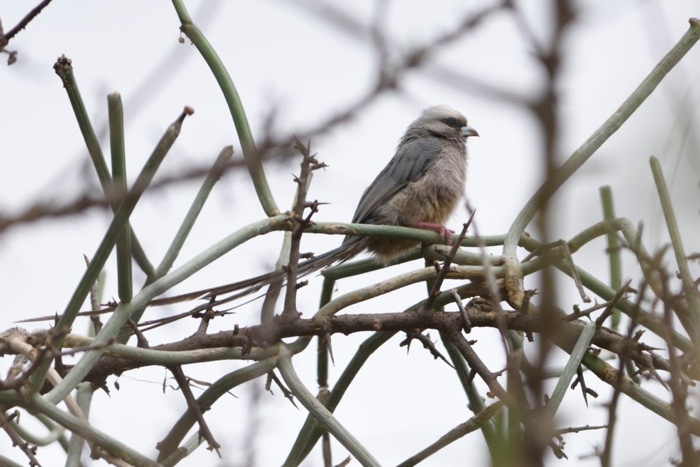
White-headed Mousebird, Colius leucocephalus - Endemic to NE Africa - Lifer
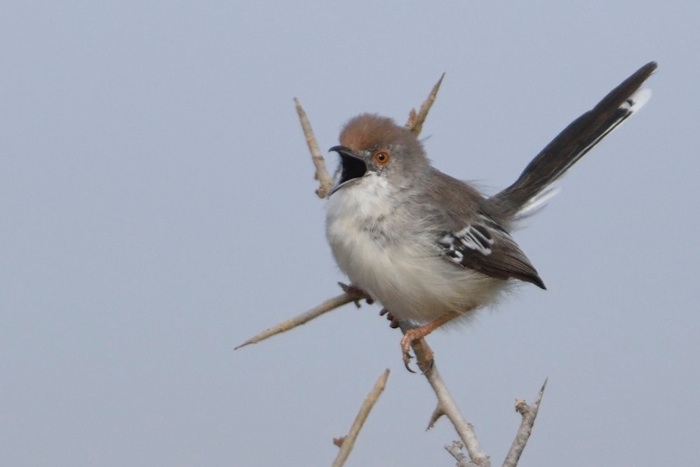
Red-fronted Warbler, Urorhipis rufifrons - Lifer
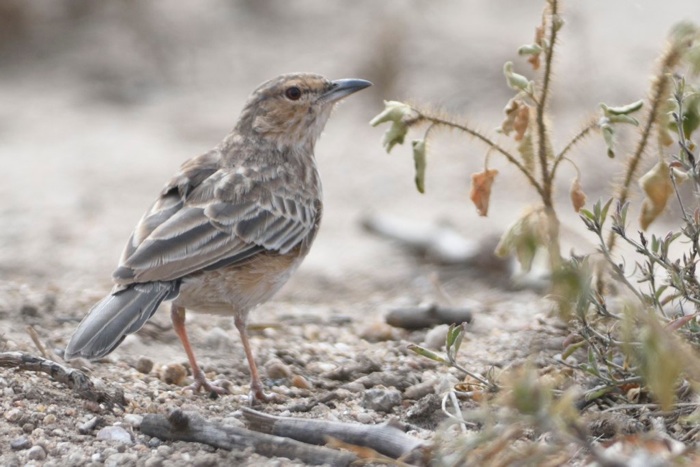
Pink-breasted Lark, Calendulauda poecilosterna - Endemic to NE Africa
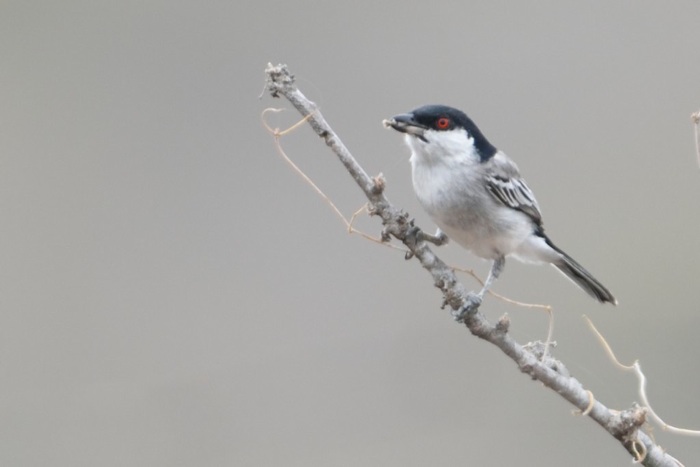
Piringle´s Puffback, Dryoscopus pringlii - Endemic to NE Africa - Photo Lifer
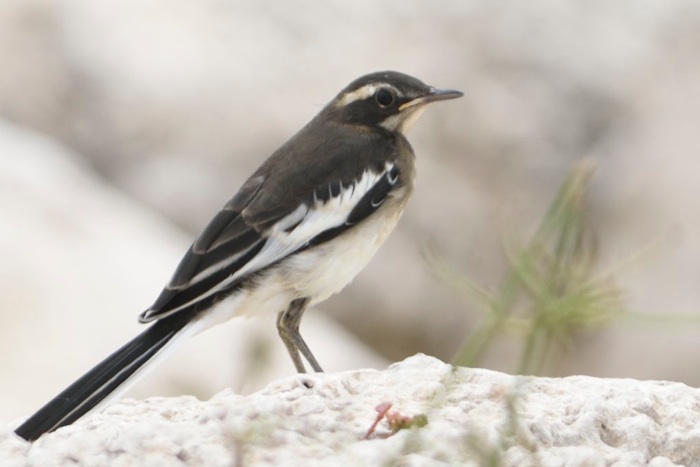
African Pied Wagtail, Juvenile, Motacilla aguimp
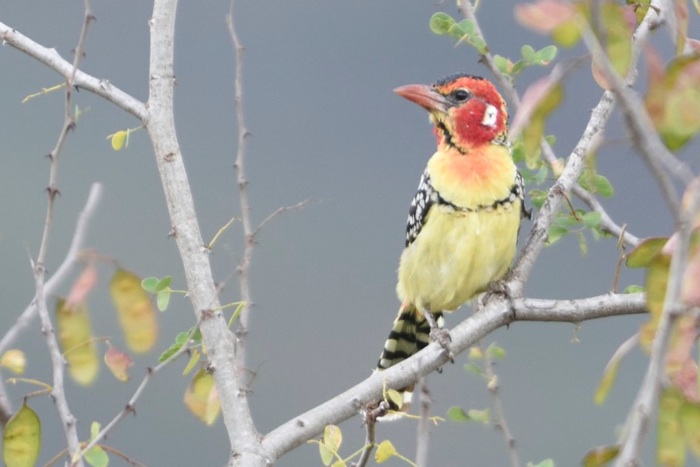
Red-and-yellow Barbet, Trachyphonus erythrocephalus - Endemic to NE Africa
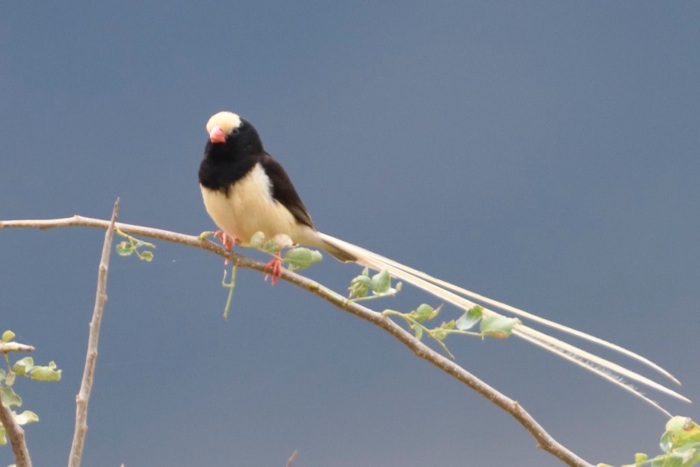
Straw-tailed Whydah, Vidua fischeri - Endemic to NE Africa
Day 4, July 7, 2015: Same - Muller´s Mountain Lodge, West Usambara
We left Elephant Motel early this morning. Martin had a few planned stops to get a better picture of the Northern Brownbul and a picture of East coast Boubou. The Elephant Motel was rustic but clean. However; the food was nothing to brag about. We headed south from Same and had roadworks for quite some time, but at least we were on a new road and could push on. It started raining heavily and we passed the place for the Northern Brownbul without stopping. We reached Mombo and started our climb towards Lusotho. Martin told me that the road was built by Germans during the colonial time. It was still raining when we past the place for East coast Boubou, but I managed to see a Mocking Cliff-Chat from the car. Once at Lusotho, we filled petrol before we started the last leg of the journey towards Magamba village. The first part was a tar road build by the Chinese a few years ago already full of pot holes, but the worst were to come. Where the tar ended, the road was at the steepest and due to the rain, it was more a mud slide than a road. Here´s a picture of the conditions:
That truck were not going anywhere. If you look closely, there is a tiny space ahead of the truck and our little Toyota RAV4 excelled through the mud. There were several hurdles like this on the way up, but we managed to reach Magamba and finally the Muller´s Lodge. We got a nice room and while waiting for lunch, I took a stroll in the garden and managed to get a lovely perched Usambara Double-collared Sunbird and then a Stripe-faced Greenbul. After lunch (5 out of our 6 hot dishes were chicken at this lodge), we were heading to a small forest patch, Mkuzu Forest, very close to the hotel. We parked the car and Martin picked up the call of the Red-capped Forest Warbler, but no show. We ticked off Moustached Tinkerbird and White-tailed Elminia (Crested Flycatcher). A little further we got the African Hill Babbler (Lifer) and a nicely perched Black-headed Apalis. Then we saw a Red-faced Crimsonwing before we got picture of Black-headed Mountain Greenbul (Picture Lifer). Just as we finished taking picture of the Greenbul, a Mountain Buzzard (Lifer) flew in. We walked on and saw Common Waxbills and Red-backed Mannikins. Then we heard the Red-capped Forest Warbler again and managed to get a few glimpses (and a picture of the rear end). It looked like it was going to rain again, so we returned to the car, picking up a pair of Mountain Wagtails on the way. We heard Spot-throat several times singing from dense cover. We returned to the lodge, but it was too late for more birding.
Here are some pictures from day 4:
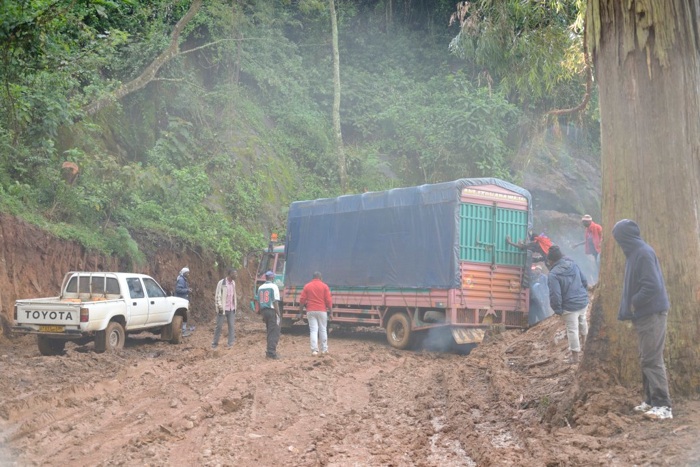
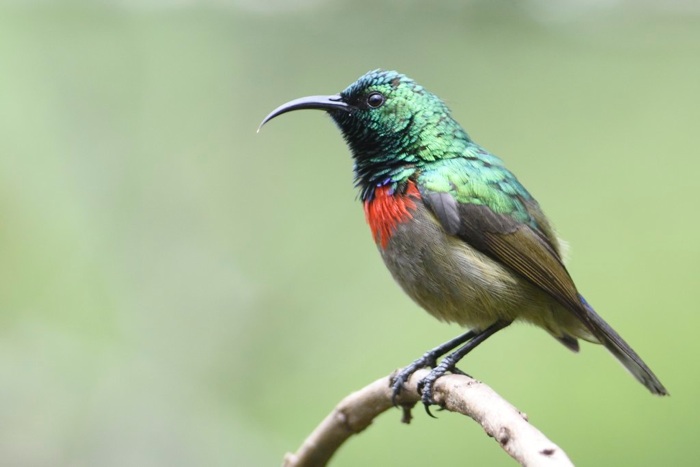
Usambara Double-collared Sunbird, Cinnyris usambaricus - Endemic to S Pare and Usambara Mts, Tanzania - Lifer
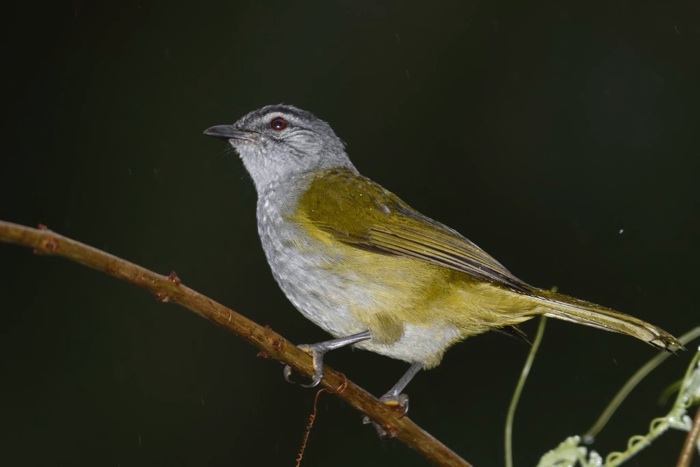
Stripe-faced Greenbul, Arizelocichla striifacies - Endemic to S Kenya and Tanzania - Lifer
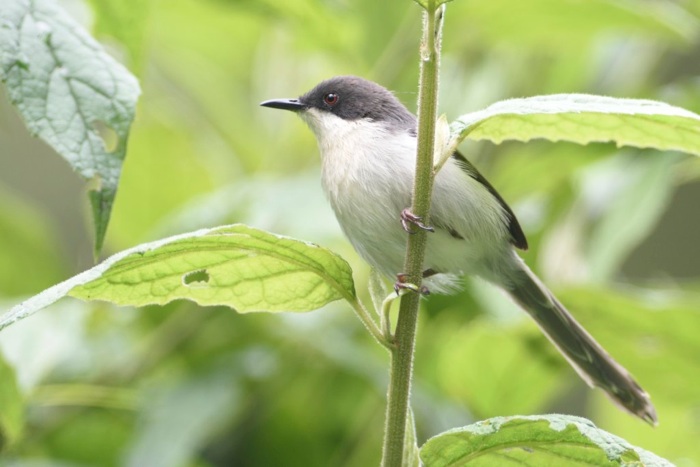
Black-headed Apalis, Apalis melanocephala - Endemic to SE Africa
Black-headed Mountain Greenbul, Arizelocichla nigriceps - Endemic to highland forests of S Kenya and N Tanzania - Photo Lifer
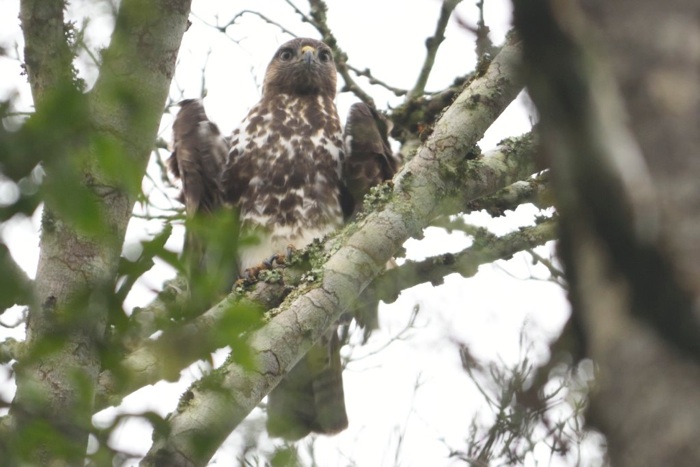
Mountain Buzzard, Buteo oreophilus - Endemic to NE Africa - Lifer
Day 5, July 8, 2015: Magamba Forest, West Usambara
We were going to the hotspot in West Usambara, Magamba Forest. We started early and was at our spot at exactly 07:00. The only problem was that there were drizzle and fog and absolutely no light. Martin went out to scout whilst Florence and I stayed in the car. After one hour, there was still no light. At 08:30, we decided to try a little anyway. We walked a little downhill our friend the Evergreen Forest Warbler was calling from everywhere. We found a Red-capped Forest Warbler and got some record shots. Then we stopped for a Fulleborn´s Boubou (Lifer). It did not want to come out, but flew across the road so we got good visuals. We walked back towards the car and there we found a bird party: It started with a noisy group of Usambara Greenbuls (Lifers), other participants: Black-fronted Bush-Shrike, Grey Cuckooshrike, Olive Woodpecker, Short-tailed Batis, Fulleborn´s Boubou and finally some Red-capped Forest Warblers. There were very little light and I had forgot my flash in the car. I managed no pictures of the Usambara Greenbuls, a record shot of the Batis, a record shot of the Fulleborn`s Boubou and a fairly decent shot of the Red-capped Forest Warbler. The party disappeared into the forest and we were very cold and wet. We had breakfast in the car. A Usambara Double-collared Sunbird was busy feeding in some bushes close to the car. I was looking at the Sunbird when something else cought my eye: A Cinnamon Bracken Warbler (Lifer). It was moving around the bush and allowed for many pictures before it suddenly popped out on a branch on the top of the bush! We walked down the road a few more times, but due to the rain and poor light, we did not pick up anything. Florence and I rested in the car and Martin walked up hill. After a while, Martin came running back and told us that he had heard the Usambara Weavers. We quickly followed him and we came to the place where he had heard them. Nothing, We went a little further and could hear them and quite far in the distance we could also see them. We managed to get a bad record shot in very poor light. Back to the car to warm up. After a while a very wet Mountain Buzzard came flying in. The last bird we connected with was a Yellow-throated Woodland Warbler. At 2 PM, we were so cold and wet that we decided to go back to camp. Due to the terrible light, most of the pictures for the day came out quite bad.
Here are some pictures from day 5:
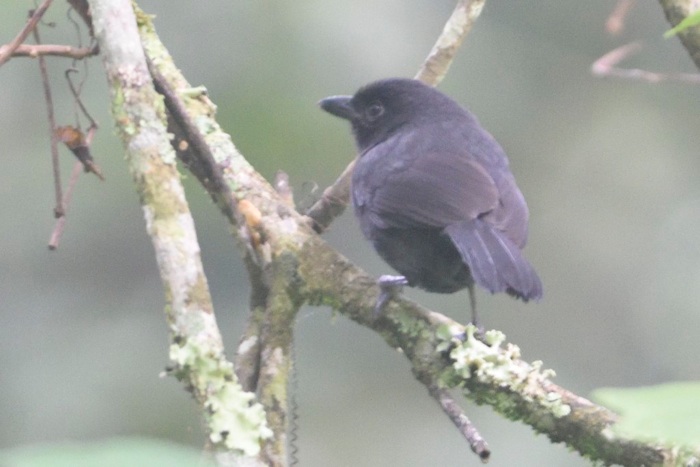
Fulleborn´s Boubou, Laniarius fuelleborni - Endemic to the Eastern Arc montane forests of Tanzania, N Malawi and NE Zambia - Lifer
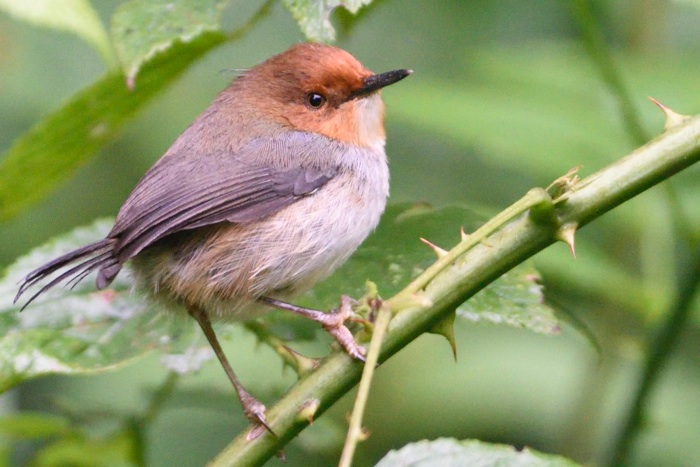
Red-capped Forest Warbler (African Tailorbird), Artisornis metopias - Endemic to the Eastern Arc Mountains of Tanzania and N Mozambique - Lifer
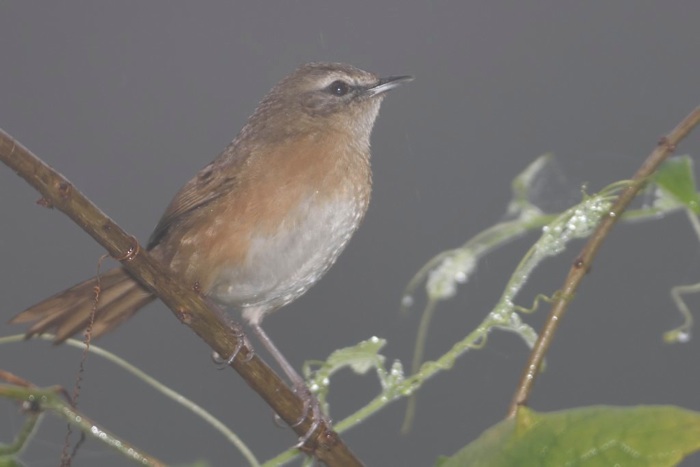
Cinnamon Bracken Warbler, Bradypterus cinnamomeus - Lifer
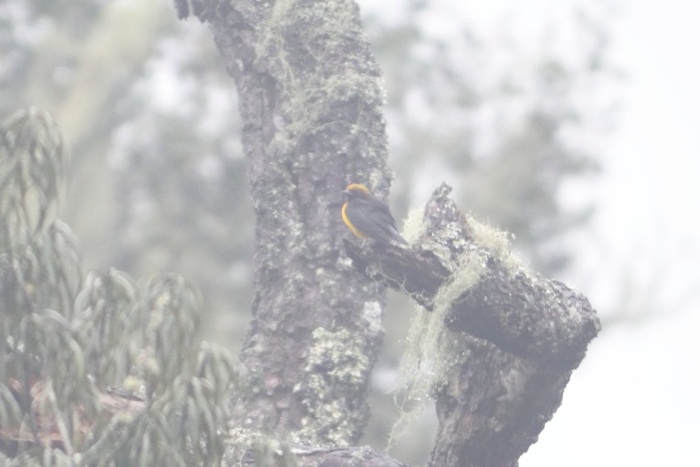
Usambara Weaver, Ploceus nicolli - Endemic to Eastern Arc Mts of Tanzania - Lifer
Day 6, July 9, 2015: Magamba Forest, West Usambara
We checked the forecast the night before and it promised sun. However; when we woke up, it was still raining. We decided not to rush it and had breakfast at the Lodge. We got close to the forest when Martin spotted something in the ditch. It turned out to be a Usambara Thrush (Lifer). It jumped up the road and Florence and I followed it on foot, but it always managed to stay quite far ahead so we only got record shots. We drove all the way up to the top, parked the car and started to bird our way down the hill. The first bird to show itself was a female Bar-tailed Trogon, before we found a pair of African Hill Babblers that entertained us for a while. A little further down we managed to snap some pictures of a White-tailed Elminia (Crested Flycatcher). On the way back to the car, we saw again some Usambara Greenbuls together with a Green Barbet, but still no pictures of the Usambara Greenbul. We deceided to walk a little uphill from the car and got some Yellow-bellied Waxbills to pose nicely for us, before we found a male Bar-tailed Trogon. We found Black-fronted Bush-Shrike and then finally at the car a confiding Cape Robin-Chat. It was no 2:30PM and the forest was very silent. We decided to head for camp. At the bottom of the hill we flushed another Usambara Thrush. We stayed in the car and soon enough we saw it pecking inside some bushes and before we knew it chased an insect into the middle of the road allowing us to get nice pictures of it. We kept quiet for a while and the Thrush came back several times before we decided to leave it. The car is always an excellent bird hide. If we had gone out of the car, we would never had gotten a picture of this elusive bird. Upon returning to camp, Florence wanted to relax a little. Martin and I took a stroll around the property of Muller´s Lodge. I wanted some better pictures of the resident Black-headed Mountain Greenbul. We saw it and I got a long distance shot, but nothing good. Instead I found a White-starred Robin who was posing for me in bad light. In the evening Martin heard the African Wood-Owl call on the property. We found a pair very quickly. We had also heard that they had a resident Spotted Eagle-Owl. We looked for it and finally had a fly by.
Here are some pictures from day 6:
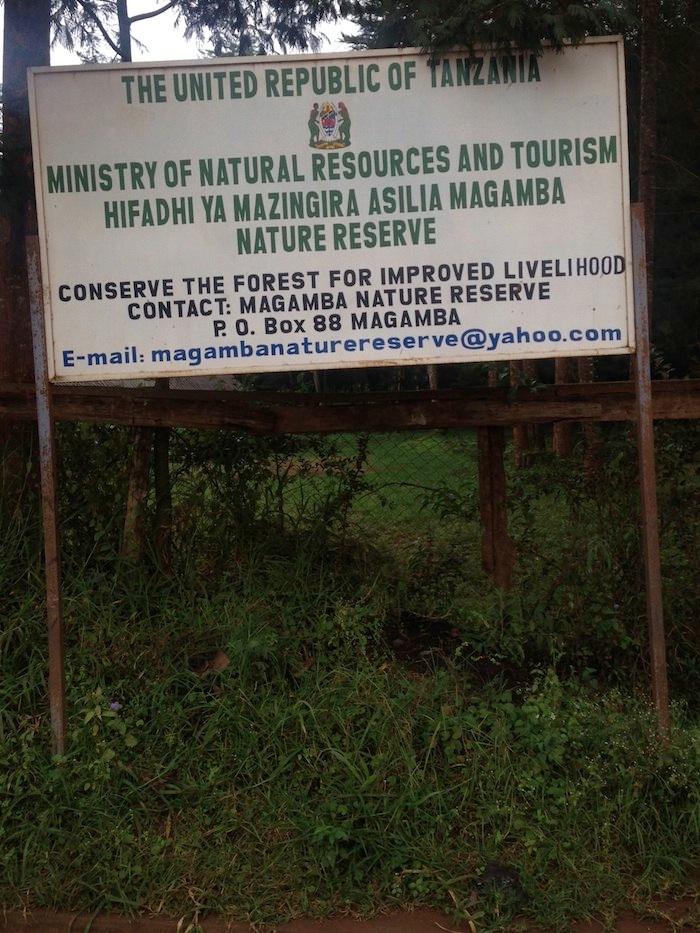
Entrance to Magamba
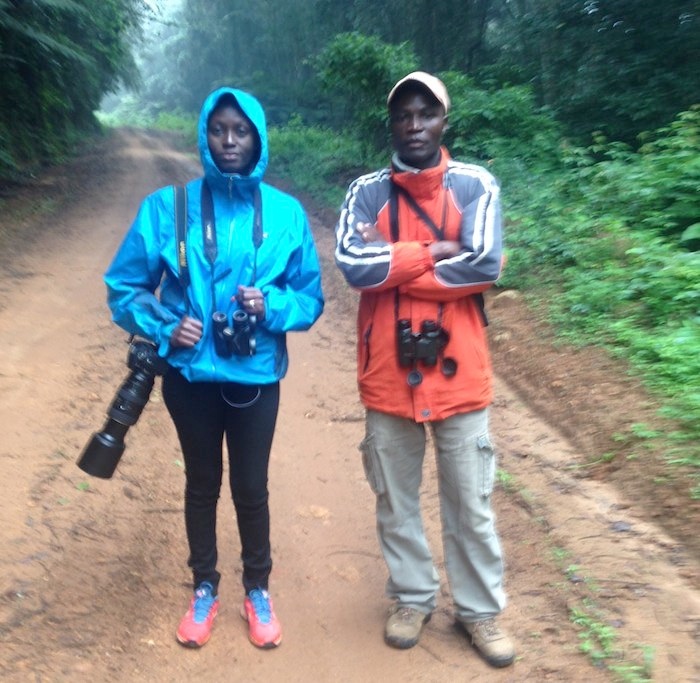
Florence and Martin in Magamba Forest
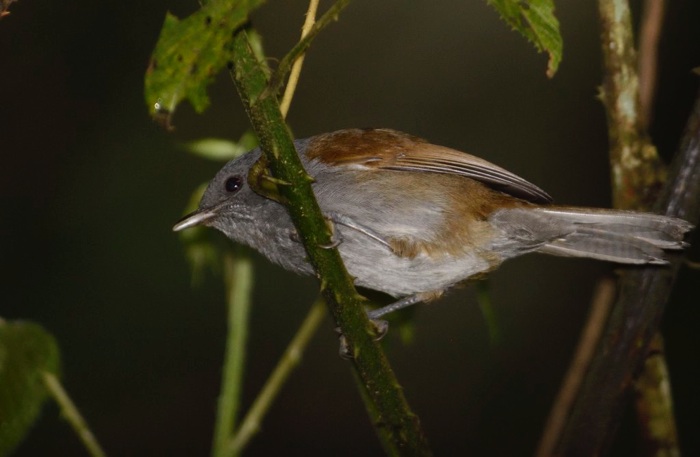
African Hill Babbler, Pseudoalcippe abyssinica - Lifer
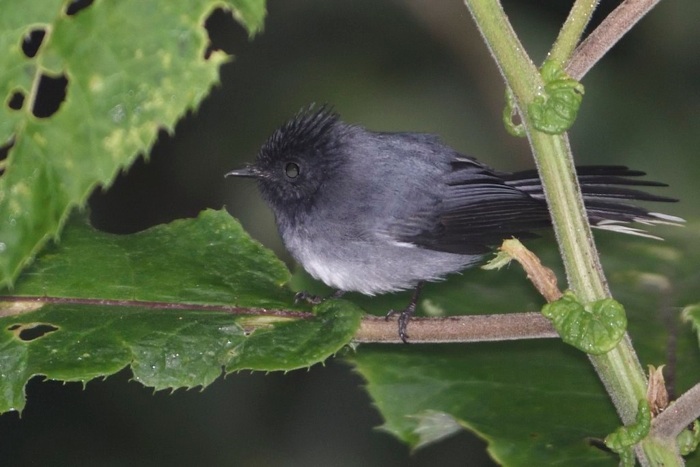
White-tailed Elminia, Elminia albonotata
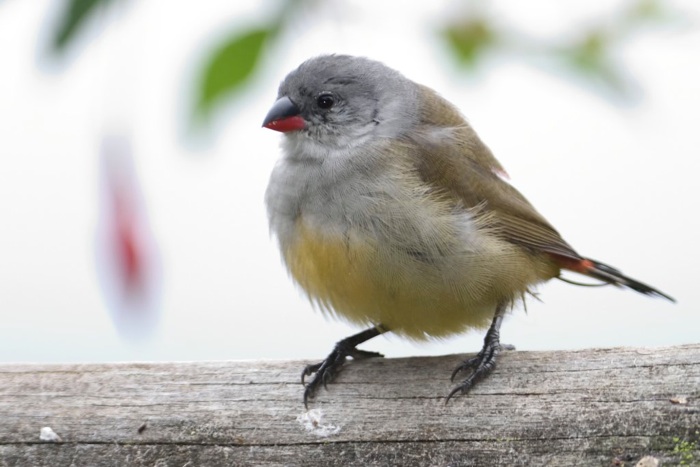
Yellow-bellied Waxbill, Coccopygia quartina
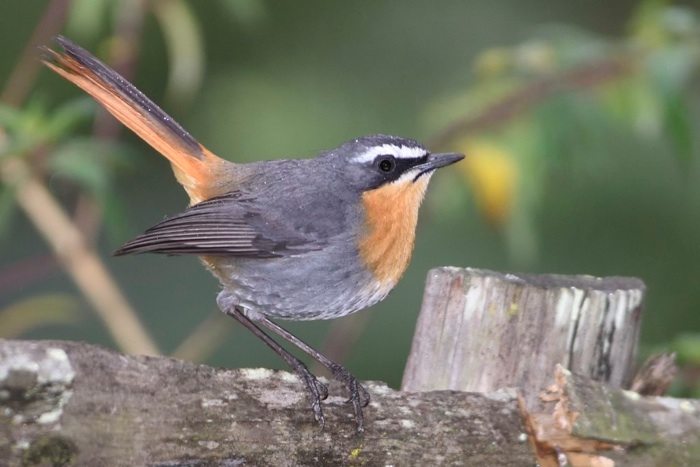
Cape Robin-Chat, Cossypha caffra
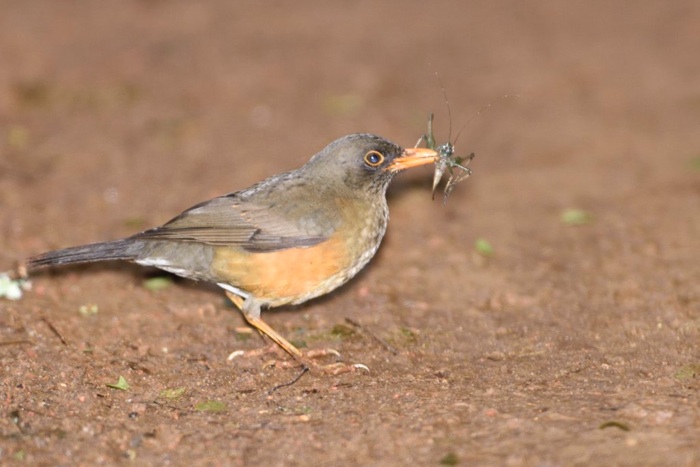
Usambara Thrush, Turdus roehli - Endemic to Usambara and Pare Mts, NE Tanzania - Lifer
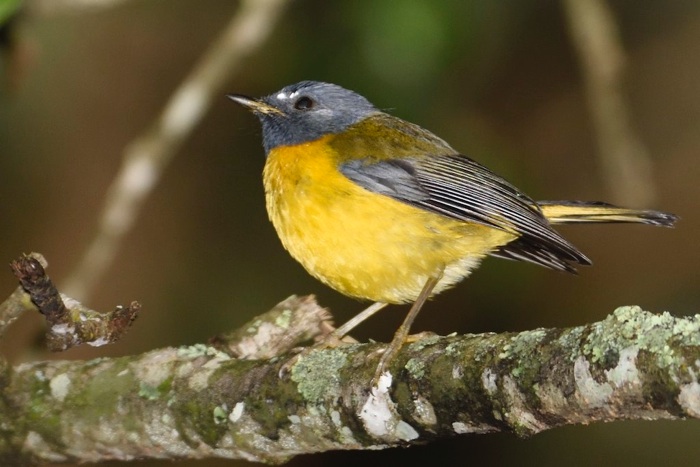
White-starred Robin, Pogonocichla stellata
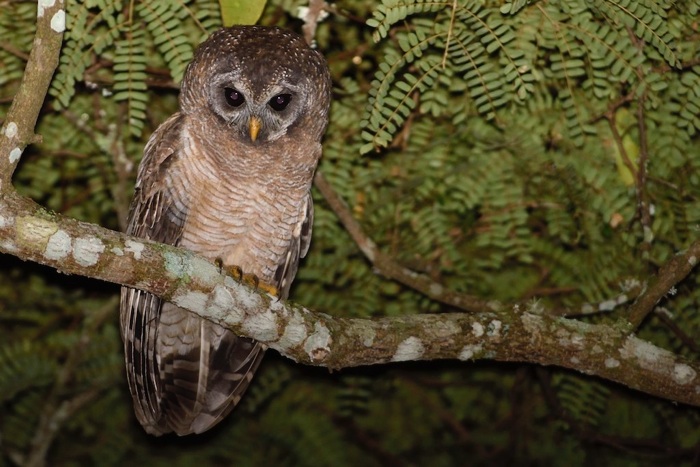
African Wood-Owl, Strix woodfordii
Day 7, July 10, 2015: West Usambara - Fish Eagle Point Lodge
Time to leave the West Usambaras. We managed a short walk in the Mkuzu Forest before our departure. A lot of very vocal birds including Spot-throat and Evergreen Forest Warbler, but no visuals. The regular suspects were there, but nothing new to add. Just before we reached the car, we ran into a bird party. No new birds, but I was hoping for a better picture of the Placid Greenbul, but no such luck. We had to navigate the road down from Magamba to Lushoto again. This turned out to be another Madjanga experience, but due to some aggressive driving, we managed to get down before a lorry closed the road right behind us.
Martin had a reliable spot for East Coast Boubou between Some and Mombo. We stopped there and sure enough heard the bird calling from both sides of the road. It took a while to locate one of the birds unfortunately too far off so I only managed a record shot. Florence went off on her own and managed to get a Mocking Cliff-Chat and a Grey Olive Greenbul. We both got pictures of a pair of Mountain Wagtails. We were running a little late, so we sped up down to Mombo and headed for Tanga. We dropped Martin off at Muheza and continued towards Tanga. I called Ieva at Fish Eagle Point Lodge (FEP) to get directions and asked if she could still feed us since we were running a little late. About 40 km from Tanga on the Tanga - Mombasa road we took off on a dirt road. There were birds everywhere, but at this time we were serious hungry so we just continued. Once at the lodge, Ieva upgraded us to a two story Bungalow. We went upstairs to enjoy the view and were greeted by a Palm-nut Vulture posing in a tree just in front of our balcony. We rushed to the restaurant and were seated on the Pier. The food was excellent. After the late lunch and a few ice cold beers, we decided to explore the property to look for birds. We only had one target specie here: Green Tinkerbird. We heard it several times, but could not get visuals. Instead we photographed Sombre Greenbul , Olive Bee-eaters and a Mangrove Kingfisher before the sun set. We went to the room and freshened up and went back to the restaurant for dinner. We met the owner Steve and his son Simon there. We were told that we would be the only guests in the lodge for the two days we were staying there. We had dinner at the Pier and the food again was excellent. After dinner I invited Steve to the bar and we had a few beers and Whiskeys. Great company.
I slept very well that night :-)
Here are some pictures from day 7:
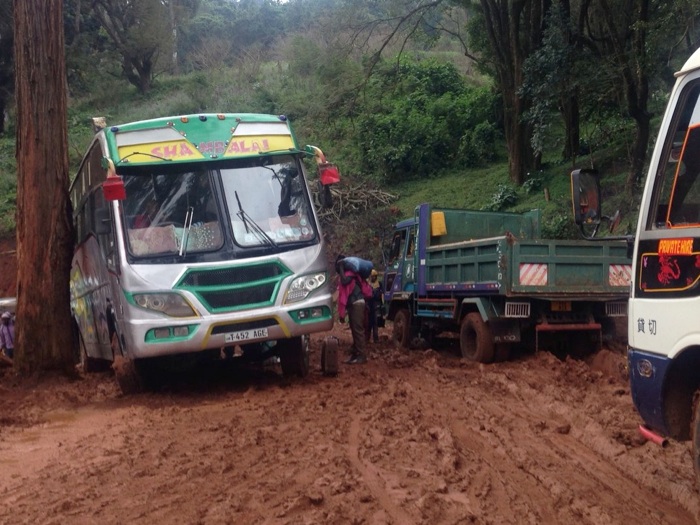
Madjanga (Chaos) going down from Magamba
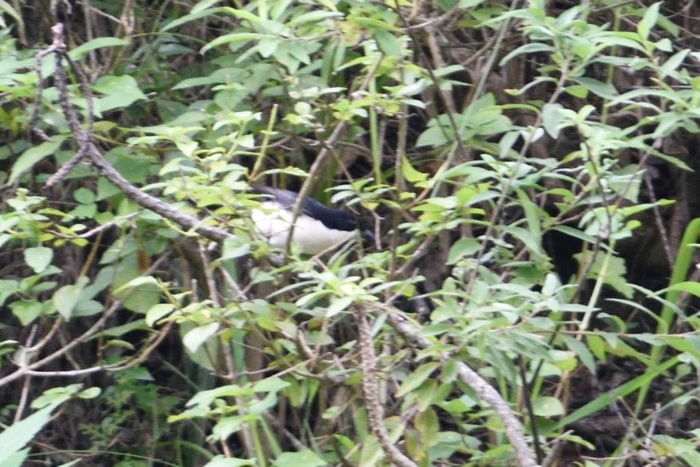
East Coast Boubou, Laniarius sublacteus - Endemic to Coastal E Africa - Photo Lifer (Record shot)
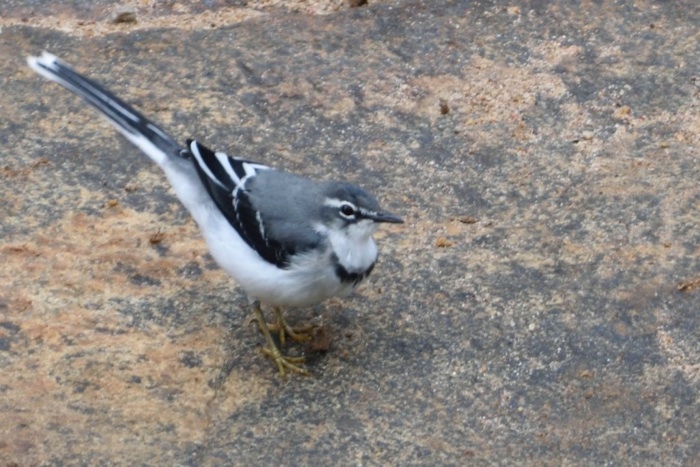
Mountain Wagtail, Motacilla clara
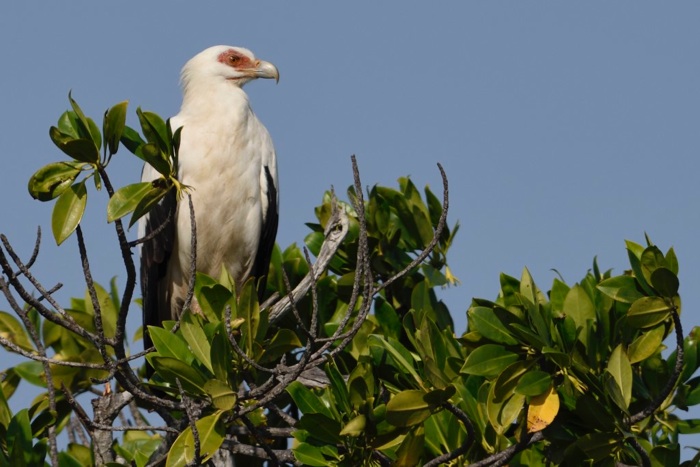
Palm-nut Vulture, Gypohierax angolensis
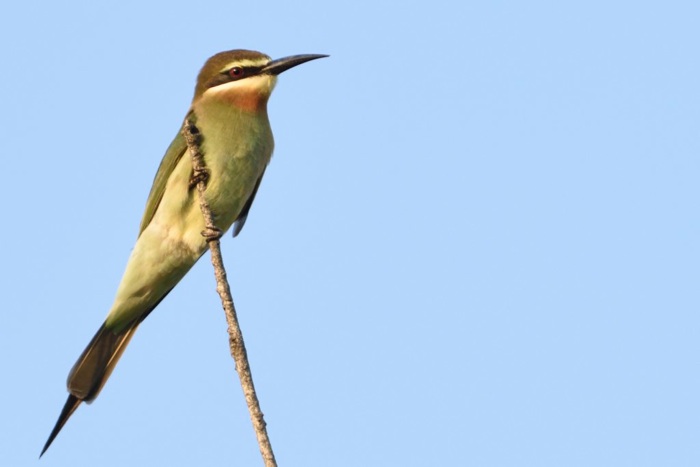
Olive Bee-eater, Merops supercilious
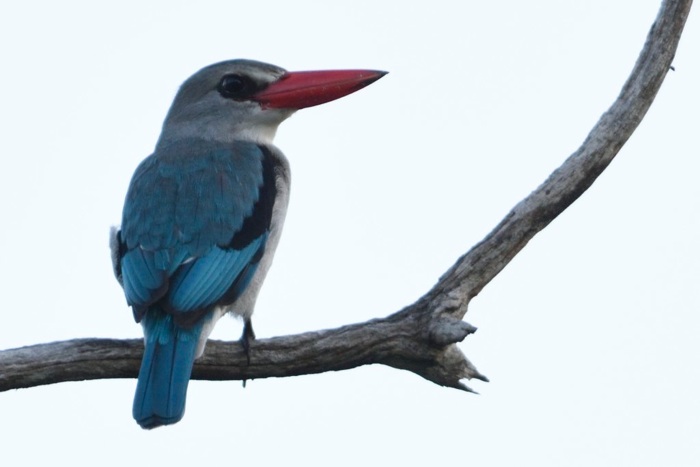
Mangrove Kingfisher, Halcyon senegaloides
Day 8, July 11, 2015: Fish Eagle Point Lodge
This day was our 2 years wedding anniversary. We had a nice breakfast and then relaxed by the pool. We had ordered a Dhow tour and Steve came and fetched us. It was nice to be on the water, but unfortunately the sea was a little rough for Florence so after less than an hour we turned around. The purpose of the trip was to go out to some sandbanks for some roosting seabirds, but since the tide was in, the sand banks was not exposed anyway. Otherwise, I would probably not have turned around so eagerly. I managed to see some Little Crested- and Common Terns, but that was it. Once ashore we were treated to a fantastic lunch, probably the best burger I ever had. Ieva presented us with a complimentary bottle of Champagne since it was our wedding anniversary. After plenty of Champagne and beer we had a nice siesta and did not do any more birding this day. The dinner later that day was also splendid.
Here are some pictures from Day 8:
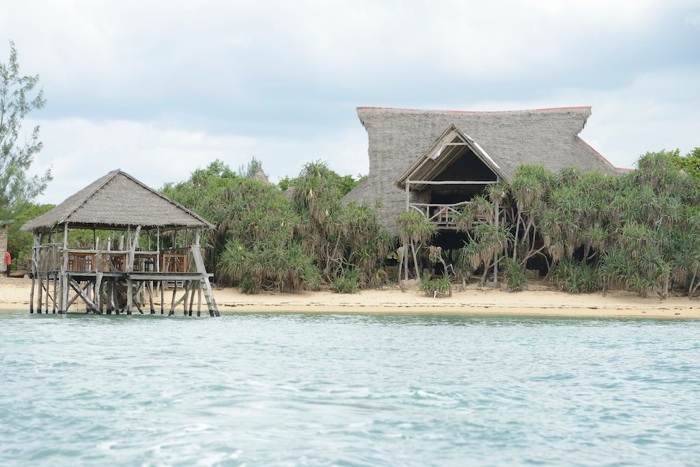
Fish Eagle Point Lodge (FEP) and the Pier from sea
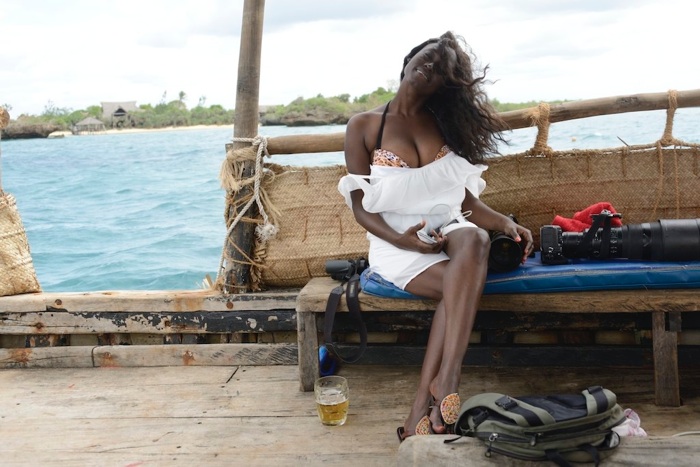
Florence posing on the Dhow
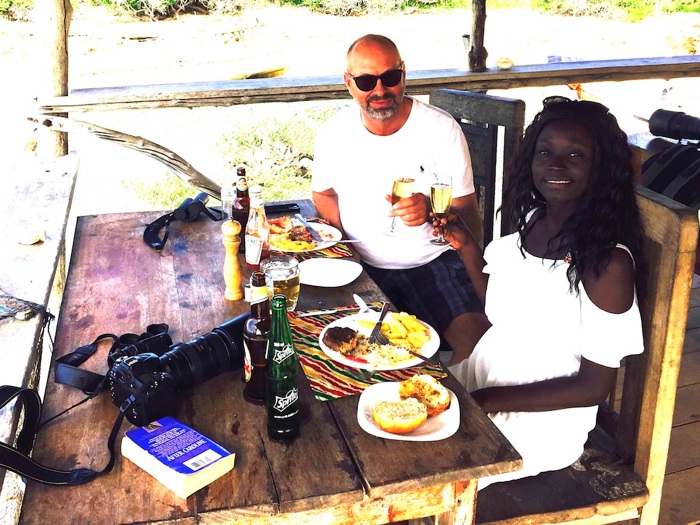
Champagne Lunch
Day 9, July 12, 2015: Fish Eagle Point Lodge - via Tanga to Kervan Saray Lodge, Pemba Island
As mentioned before, since we dipped on the Terns, it was only one bird we needed at the FEP: The Green Tinkerbird. I had played the call for Florence (she is better than me with remembering bird sounds) and this morning I was rudely woken up by Florence shaking me and telling me “Your bird is just outside”. I would not say I jumped out of bed, but I did not take too long to get dressed and there it was, just outside our door step, the Green Tinkerbird. It gave us splendid photographic opportunities (Florence got a better picture than me of course). After that we also got very nice views of a Sombre Greenbul. We had a nice breakfast and then Steve offered to take us for a walk. He had made a dam and it was very popular with the birds. It was quite hot on our walk and we did not see any birds of interest. Unfortunately it was soon time to say goodbye to our wonderful hosts Ieva, Simon and Steve. After some rustic places with nothing exquisite in the food department in the places we stayed on our way to the coast, I must say that we felt like being in paradise at FEP. We wish to send a very big thank you to our wonderful hosts Ieva, Simon and Steve for making our stay so nice. Anyway, the car was loaded and off we went. Just before the main road, I spotted a Northern Carmine Bee-eater. The trip to Tanga airport was uneventful. We met a representative from Sam´s Car Rental at the airport. We dropped the car there and got on a flight to Pemba Island. I am scared off small airplanes, but the 20 minute or so ride was very smooth. Once in Pemba, our Taxi driver was waiting to take us to the Kervan Saray Lodge. I told the driver that we were birders and asked him if he knew the whereabouts of the Java Sparrows. He confirmed this and took us to Chaka Chaka were we had great views of the Java Sparrow (Lifer). After that we went straight for the lodge. We were both a little disappointed with the lodge, the room was nice. I asked about hot water, they said no only cold water. The swimming pool was not working and the dinner the first day was a vegetarian surprise! I am a carnivore and do not want to eat Rabbit food voluntarily! Anyway, Florence was not too keen on vegetarian either, so she organized for our table to have fish.
Here are some pictures from Day 9:
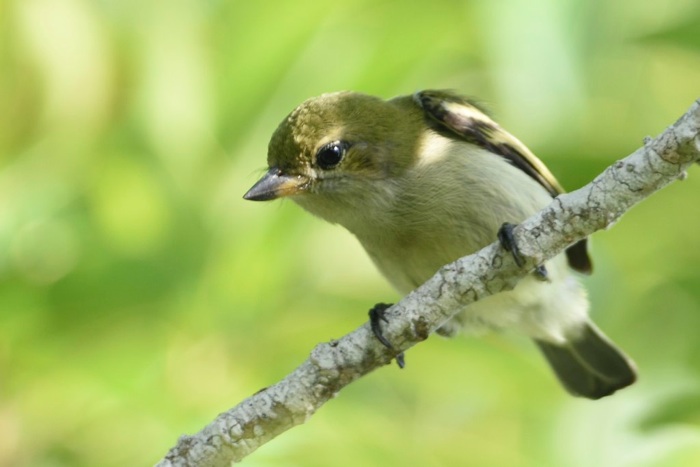
Green Tinkerbird, Pogoniulus Simplex - Endemic to SE Africa - Lifer
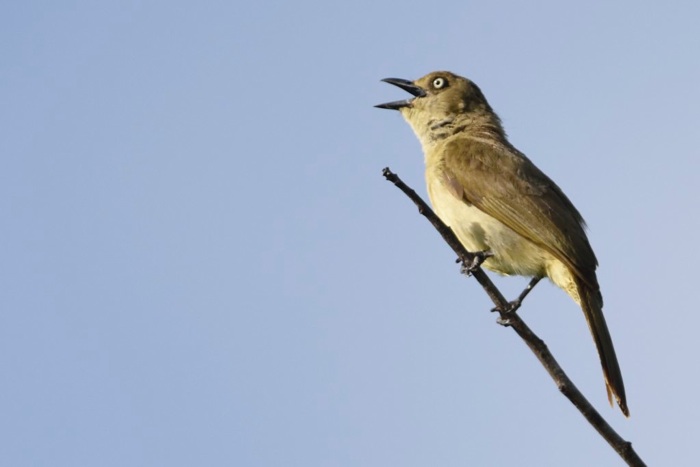
Sombre Greenbul, Andropadus importunus
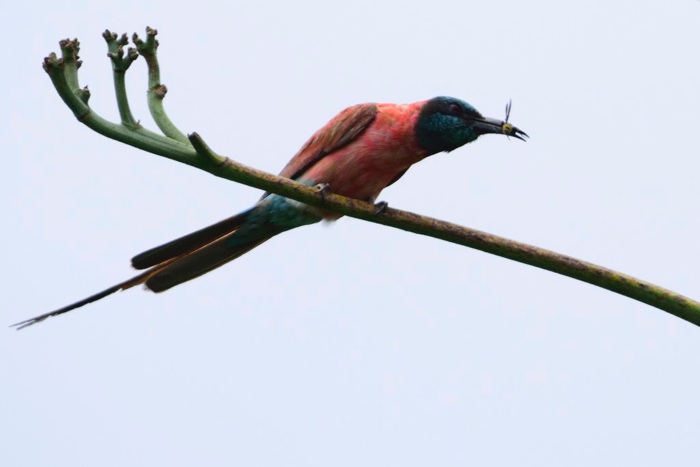
Northern Carmine Bee-eater, Merops nubicus
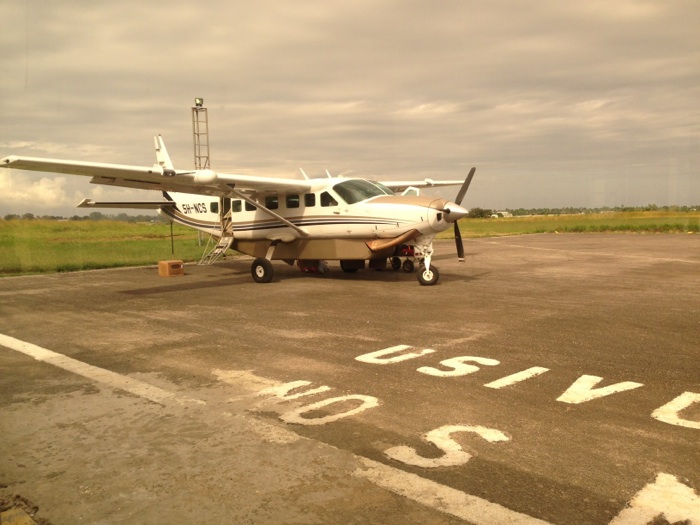
The plane from Tanga to Pemba
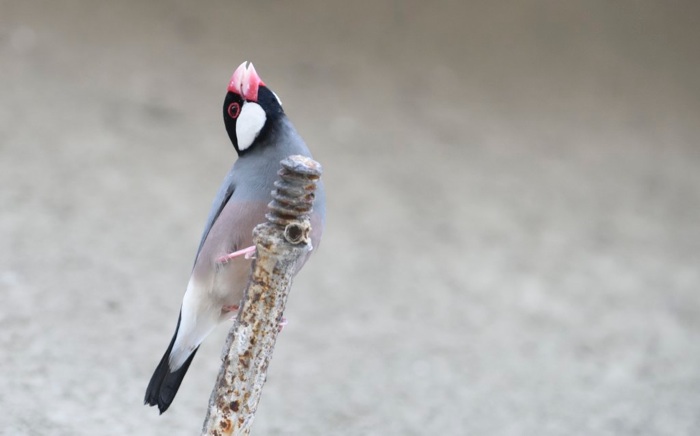
Java Sparrow, Lonchura oryzivora - Lifer
Day 10, July 13, 2015: Northern Pemba Island
We had organized with a local ranger to find us the 4 endemic birds we needed on Pemba Island. The lodge set us up, but of course it was a misunderstanding, because the people at the lodge did not have a clue on where to find the birds, so we were sent to the entrance to Ngezi Forest. The ranger was of course 30 minutes late, so it started to get a little hot even before we started the birding. The first bird we saw was Brown-headed Parrot, then we found the Pemba Sunbird (Lifer), but did not manage any good pictures unfortunately. We saw the White-eye (Lifer), but did not manage any pictures. Then we had a stunningly perched Dickinson´s Kestrel. It started getting real hot and we decided to go back to the lodge for lunch. Before we left, we picked up African Goshawk, Green-backed Heron and a couple of African Harrier-Hawks (Gymnogene). The Ranger wanted to meet up at 3PM to get the Pemba Green Pigeon, but I said no earlier than 5PM and he agreed to meet and also promised to be on time. Once back at the lodge we suffered through a dreadful Lunch, just as bad as the breakfast. After lunch, I did some birding on the ground while Florence relaxed. I got some pictures of a Dimorphic Egret and I also found a pair of Pemba White-eyes in the garden. These were posing nicely. I called Florence over so she also got pictures of the White-eyes. It soon became 5PM and we met up with the Ranger again. He took us to the same area as before and he very quickly located the Pemba Green Pigeon. We actually found 6 or 7 of them possible in their night roost. Having ticked and photographed the Pigeon, I wanted to find more Pemba Sunbirds. We saw quite many of them, but they were always high up in threes especially Palm Trees. It became quite frustrating. The bird was everywhere, but always too high up. The light were suddenly gone and we headed off to get the Pemba Scops-Owl. We went to the Ranger station for the Ngezi Forest. There were already another Ranger there that had located the owl. We walked for about 1 minute into the forest and were in contact with no less than 4 Pemba Scops-Owls (Lifer). The Ranger even know where one pair had their nest and we got very good pictures of the Owl. We had now ticked and photographed all the 4 endemics and were very happy to return to the lodge. I wanted a well deserved cold beer at the lodge and I was quite surprised to find out that they had ran out of beer! I asked the manager how this could happen and he said “It is Ramadan” I said, it is Ramadan every year and that is surely something you plan for? He said “You see that Beer is our biggest expense” I said that surely then it must be your biggest income too, to which he did not have such a great reply. Anyway, as before the food was nothing to brag about.
Here are some pictures from Day 10:
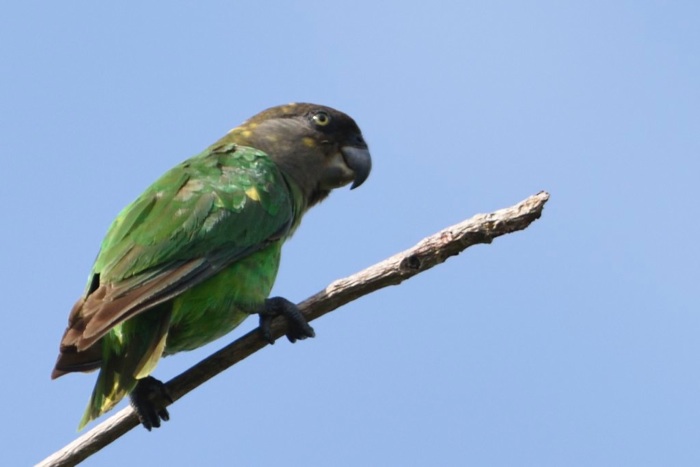
Brown-headed Parrot, Poicephalus cryptoxanthus - Endemic to SE Africa
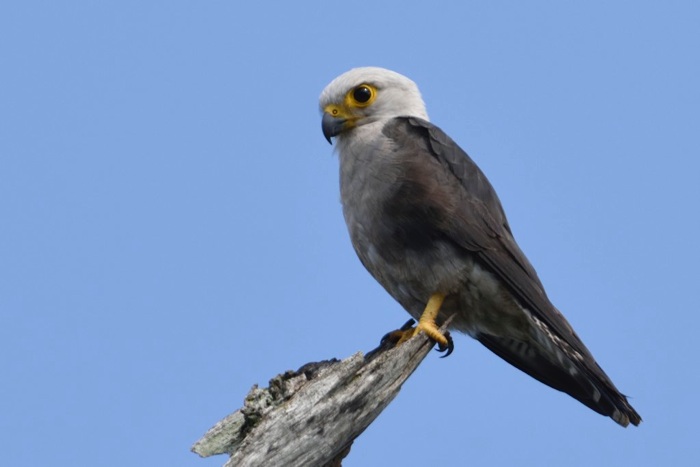
Dickinson`s Kestrel, Falco dickinsoni
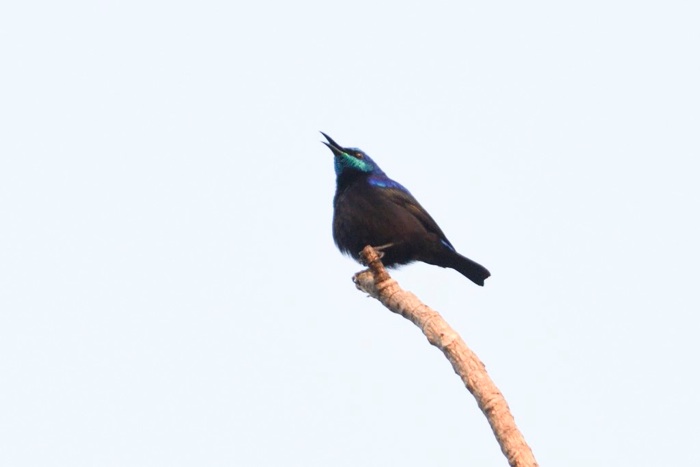
Pemba Sunbird, Cinnyris Pembae - Endemic to Pemba Island, Tanzania - Lifer
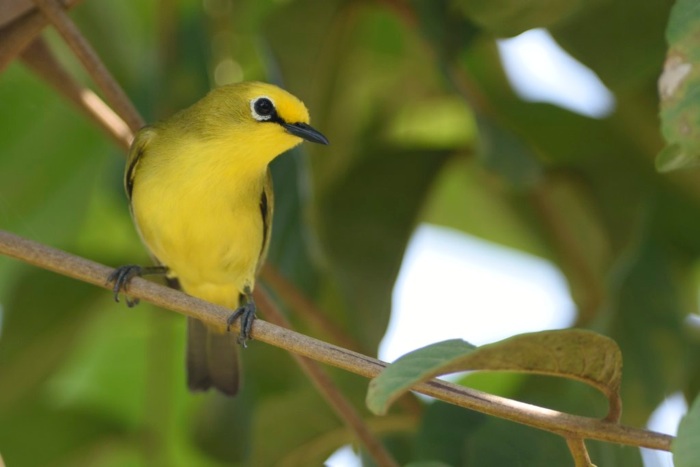
Pemba White-eye, Zosterops vaughani - Endemic to Pemba Island, Tanzania - Lifer
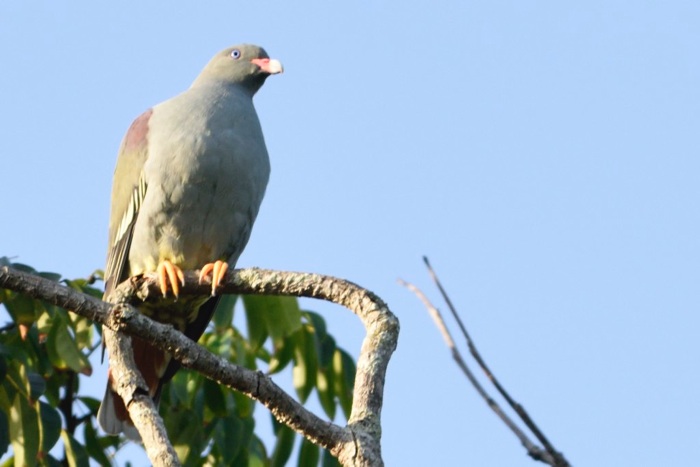
Pemba Green Pigeon, Treron pembaensis - Endemic to Pemba Island, Tanzania - Lifer
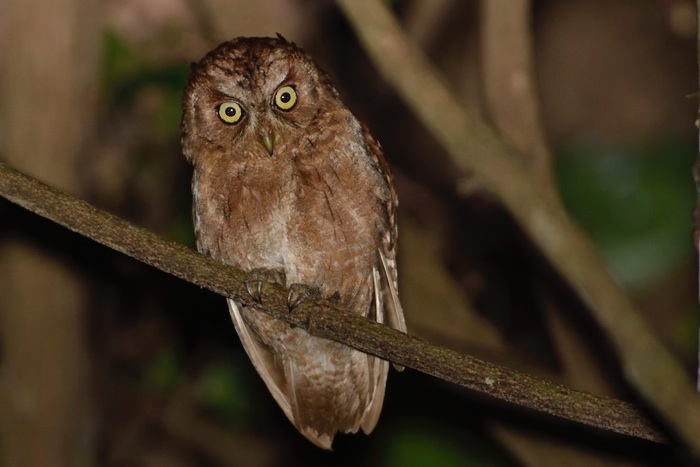
Pemba Scops-Owl, Otus pembaensis - Endemic to Pemba Island, Tanzania - Lifer
Day 11, July 14, 2015: Northern Pemba Island
Well, with 2 days to go an all the birds ticked, no beer, no swimming pool, what do you do? I started with getting pictures of a Dimorphic Egret. Then I went looking for a better picture of the Pemba Sunbird. No such luck. I walked a little in the area just outside the lodge and was so bored that I took pictures of Pied Crow. Back at the lodge, I found a African Goshawk (Race Pembaensis). Out for a walk again looking for Pemba Sunbirds. I found a White-browed Coucal nicely perched. Back to camp and found the Goshawk in another spot and Florence also managed to get a picture. Back for a walk, saw several Pemba Sunbirds, but none in good light or on a good perch.
Here are some pictures from Day 11:
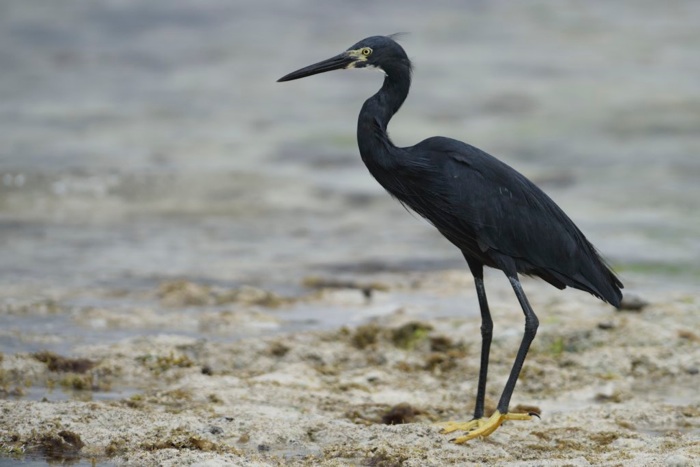
Dimorphic Egret, Egretta dimorpha
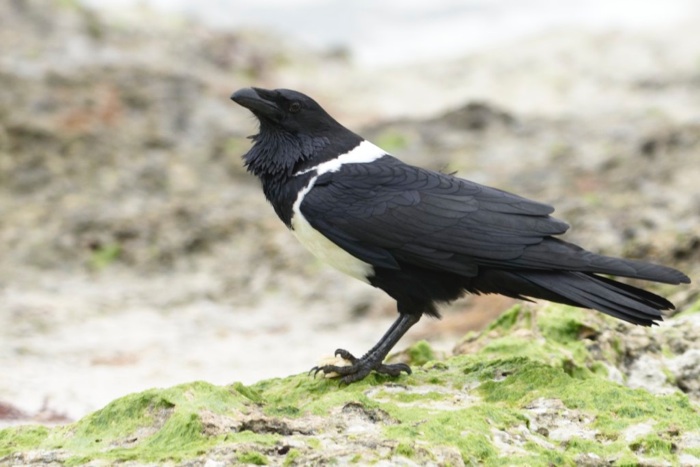
Pied Crow, Corvus albus
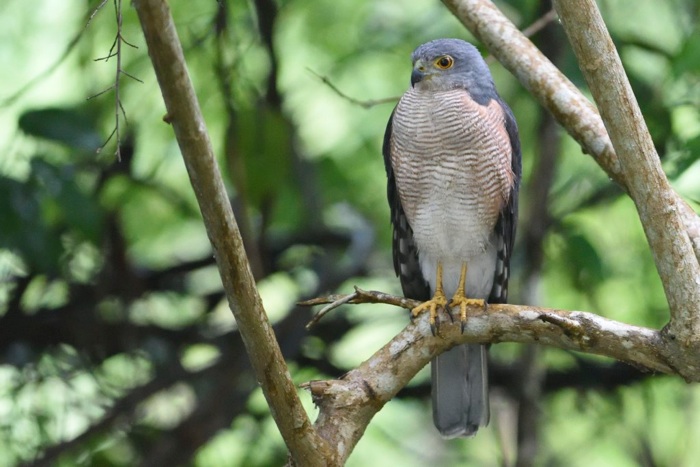
African Goshawk, Accipiter tachiro
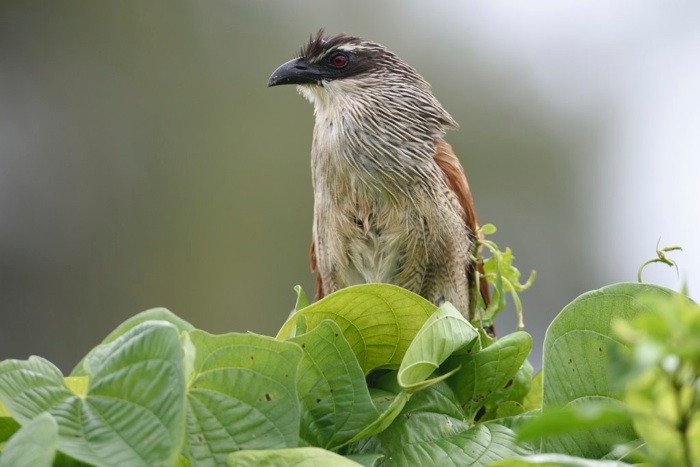
White-browed Coucal, Centropus superciliosus
Day 12, July 15, 2015: Northern Pemba Island - Dar es Salaam
We had an afternoon flight out of Pemba and I still had time to do some birding before we left. I was chasing the Pemba Sunbird all over again and finally managed to get a female in the garden. Besides that, the only other bird I got that day was a Broad-billed Roller.
Here are some pictures from Day 12:
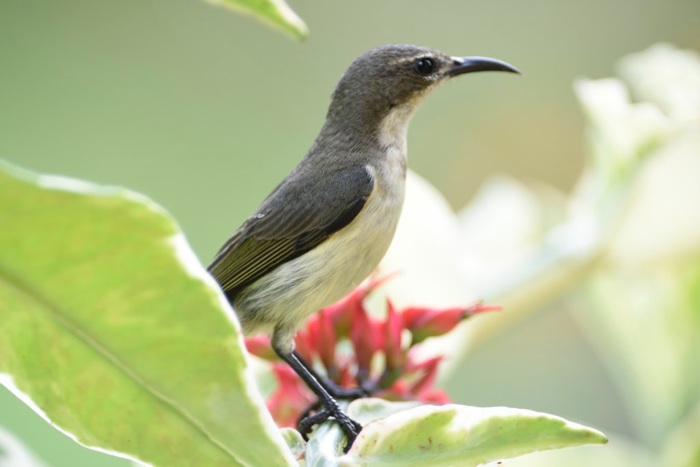
Pemba Sunbird (Female), Cinnyris Pembae - Endemic to Pemba Island, Tanzania - Lifer
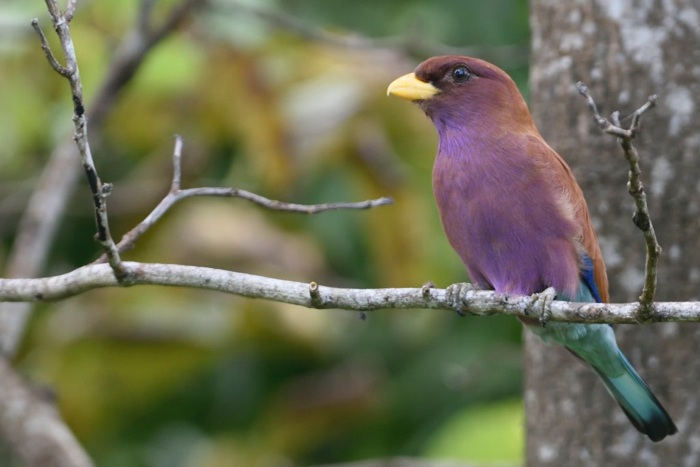
Broad-billed Roller, Eurystomus glaucurus
We stayed 2 nights in Dar es Salaam before we flew back to Norway. All in all it was a very successful trip with 29 new lifers and 33 picture lifers I have now seen 1046 different species and I have pictures of 1019 different species in Africa. I added 63 birds to my Tanzanian list (Now 538) and 58 birds to my Tanzanian Photographic list (Now 484). Again a special thanks to our guide Martin Juho. Without him our list of lifers would have been much shorter. We saw 239 diiferent species on our trip.
